
Бесплатный фрагмент - Настоящая история WW2
На русском и английском
In the design of the cover of the book the symbols of the Allied victory are used — the American B-29 bomber and the Soviet T-34-85 tank
При оформлении обложки использованы символы победы союзников — американский бомбардировщик В-29 и советский танк Т-34-85
The book is based on many sources, confirming the reliability of each other. In this text there are no discoveries and sensations, but for the first time a coherent and consistent presentation of the epoch is presented.
The author is not tied to the interests of political parties, organizations, social strata, and therefore has the right to declare his perfect impartiality.
A common vision of history is what is important for establishing public consensus. Going outside the Federation, you can take a printed book to build on the text, explain to partners, or friendly English-speaking opponents, how everything was in fact.
Regrets and apologies for the automatic, though fairly high-quality, corrected translation.
Книга основана на комплексе независимых источников, подтверждающих достоверность друг друга. В данном тексте нет открытий и сенсаций, но впервые представлено связное и непротиворечивое изложение эпохи.
Автор не завязан на интересы каких-либо политических партий, организаций, социальных слоев, и потому вправе заявить о своей совершенной беспристрастности.
Общее видение истории — то, что очень важно для установления общественного согласия. Отправляясь за пределы Российской Федерации вы можете взять отпечатанную книгу, чтобы опираясь на текст, объяснить партнерам, или дружелюбным англоязычным оппонентам, как все было на самом деле.
Сожаления и извинения за автоматический, хотя и достаточно качественный, правленый перевод.
Заказать печатную книгу вы можете, открыв ресурс «Ридеро». Там же, а также на «Литрес» доступен электронный вариант.
The Beginning
Formation of the Third Reich
The appearance of the Third Reich (empire), which he became for 13 years and 13 days, as some historians believe, is the merit of the only person — Adolf Hitler (Hydler). The surname is identical to the meaning «forester, caretaker». The only half-sister, Paula, the artist, lived until 1960, Angel’s half sister (by father), a housewife until 1949, her son Leo Hitler, was captured during the Battle of Stalingrad and was offered for exchange for his son Stalin, Yakov. Brother Edmund dies at a minor age.
As a child, Hitler was battered by his father, twice changed his school due to poor progress and bad behavior. The only teacher he relishes is the history teacher, who speaks the history of ancient Germany, inspiring the students with the idea of the superiority of the German people.
In 1908, Hitler failed examinations at the Vienna Academy of Arts. He does not want to engage in any kind of physical labor in principle.
Relations with women in Adolphus there are no, according to some testimonies — because of fear of infection with syphilis… or because of elementary hypertrophied shyness. The only school friend of Adolf, August Kubichek (future musician of the Vienna Conservatory) in his memoirs mentions the girl Stephanie, … a slender blond Valkyrie of 17 years. Hitler collects information about his beloved for four long years, experiences a certain lieutenant because of her enthusiasm, writes countless poems, such as «The Hymn of the Beloved», etc. However, despite the fact that A.G. there are certain chances (once, at the celebration of the flowers of Stephanie, with a smile throws the best flower in Hitler), Adolf considers himself above some kind of flirting. The lack of words and actions, only timid, even fanatical views — this is not exactly what the girls want.
The financial side of life sags with time. The future leader of the Third Reich stays on the streets, digs in garbage cans, in search of food, begs…
Since 1909, the sale of painted postcards with views of Vienna begins to bring Adolf a good income. Relations with women are getting better.
A.G. studies English and French in the amount sufficient to view the films of these countries in the original, is actively interested in arming the armies of the world and politics. He does not want to serve in the Austrian army «for the Czechs and Hungarians», but in 1914, with the beginning of the Great War, he makes an application with a request to serve in the Bavarian (German) army. In 1918, Hitler was poisoned by the gas of a chemical shell exploding nearby the English. Half lost sight, he leads the blind comrades from the firing zone. It was at this time, according to his testimony, along with the news of the surrender of Germany, that he found a revelation about the revival of the Reich and miraculously healed. According to mythology, possibly having real roots, Hitler (1) receives a suggestion from a doctor, a powerful hypnotist, that he is the Messiah of the German people, and, therefore, must see through. Or, (2) Concludes an agreement with a representative of the dark forces that he will be given power for 13 years and 13 days (January 30, 1933 — April 30, 1945) for the rise of the German nation.
In November 1923, the rate of the German mark is 4.2 trillion for the American dollar. In 1924, parallel to it, the unofficial monetary unit — the so-called. rental mark secured by a pledge of immovable property. The rate to the ordinary mark is one to one trillion. A few months later, a legitimate Reichsmark (RM) appears, equal to it at face value, and both these currencies remain in circulation in order not to undermine public confidence. The cost of one RM — 2.5 grams of pure silver, which at the current rate is about 150 rubles. The appearance of these denominations suspends hyperinflation (5000%, the issuance of wages — twice a day, people are starving).
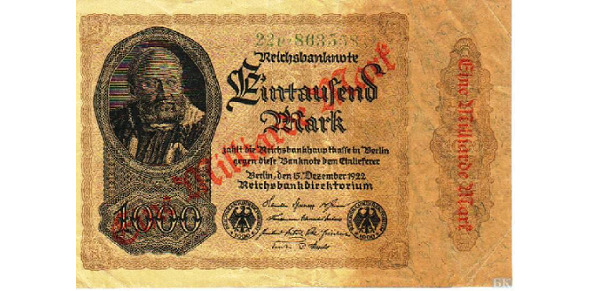
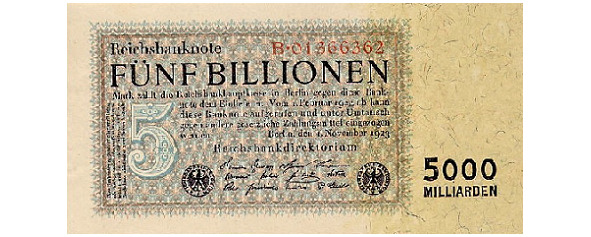
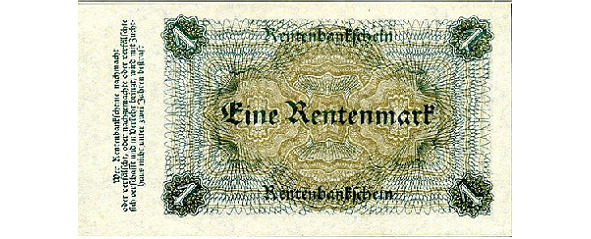

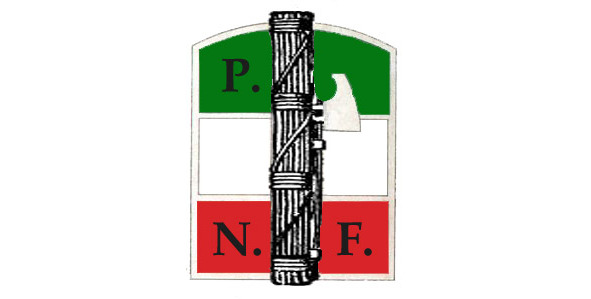





1. Billion of German marks in 1923. Till this time, Germany was called the Weimar Republic. Somehow it turned out that the division of the country could be contained, providing hyperinflation (the Rhineland was preparing to secede). Prices doubled every three days, in circulation was the so-called paper stamp (Papiermark). A beer mug cost four billion. In 1924, inflation was stopped. By the mid-twenties, the republic had achieved certain economic and political successes, but since 1929 a new, though not so strong, recession had followed. In the end, the Germans decided that the way out of the situation was in the new leaders and the Third Reich.
2. Five trillion «paper» brands in 1923.
3. Rental stamp. Provided with industrial potential, real estate, very popular. The rate is one to a trillion of «pipermaroks».
4. Completely solid in design and execution of the Reichsmark of 1942 issue. A severe aesthetics of the new state order is visible. The salary of a German lieutenant (Obersturmfuhrer) is 220 marks a month. The purchasing power of the brand in the main set of products and services is about the same as that of the modern 7.5 dollars. The course towards the American currency, strangely enough, remained stable, until 1945.
5. The emblem of the Italian (primordial) fascism is a bundle of fascias (Latin fasces- rods), birch or elm rods, rods tied with a red ribbon, with a hatchet in them. This symbolism in Russia is not prohibited, it is used by such state entities as the Federal Penitentiary Service and the Federal Bailiff Service.
6. Emblem of the Spanish fascists, otherwise — of the Franco, Falangist, the party Falange Española. Arrows and yokes are symbols of the unifiers of Spain, the Catholic monarchs Isabella of the First Castilian and Ferdinand of the Second of Aragon. This form of fascism exists even after the end of World War II, until 1975 — the time of the natural death of dictator Franco Franco.
7. Lattice — a symbol of suffering for freedom, the emblem of the nationalist «Iron Guard» of Romania.
8. Symbol of the Polish Phalanx. The Poles are ardent nationalists, they do not recognize kinship with the Slavs, they are looking for their heroic forerunners in the semi-mythical tribe of the Sarmatians or even the Germanic tribes. Be that as it may, at the beginning of the Second World War, one nationalism almost completely destroys another, and this circumstance undoubtedly helps the Allies to win.
9. The symbol of the Croatian «Ustashi» (Horst «Ustaše» — «TheInsurrection»). The main idea of those who consider themselves descended is a mono-national state, anti-Semitism, serbophobia, nationalism, territorial claims to Serbia. Under the Germans, the Ustash, along with some Bosnian Muslims, form the Waffen SS corps, numbering about 113,000, physically destroying 400,000 Serbs, Jews and Gypsies.
The postwar policy of Yugoslav leader Josip Broz Tito — «Forgetting everything bad» only leads to the fact that in the early 1990s, non-repentant Croatian nationalists go on relapse, and unleash a bloody Civil War.
10. Flag of the National Socialist Party of Hungary «Crossed arrows». In fact, the «Crossed Arrows» and its sole leader, Ferenc Salashi rule parallel to the government of Miklos Horthy. It is Horthy who initiates the entry of his state into the Second World War. The main goal, at the very beginning of the expansion, is the return of considerable territories, more than half of the country lost by Hungary under the Versailles Treaty. Further, the non-fascist formally Hungary, whether or not, is forced to participate in all military operations of Hitler’s Germany.
In October 1944, the Horthy government announced a truce with the USSR. A detachment of saboteurs Otto Skorzeni kidnaps Horty’s son. Under such pressure, the head of state transfers powers to Ferenc Salashi, and moves away from business.
The «Crossed Arrows» party rules until March 1945.
The way to power was determined after Hitler was sent to the army propaganda courses: his speeches were noticed by influential people. Fourteen years later, A.G. becomes simultaneously Reichspresident and Reichskanzlerom; These long names are shortened to the word «Fuhrer» — «leader.»
The first speeches of Hitler in this post are reduced to defining the world as an unconditional value, however, one way or another, its achievement follows from the return of lands lost by Germany after the Great War.
Landmark of the German Fuhrer — the movement of «blackshirts» in Italy. Since 1919, this southern country is experiencing a «red two-year». The workers organize election committees on the direct model of the Soviets in Red Russia, seize enterprises, and try to control them more or less efficiently. The example of the USSR that is formed in general, does not bring inspiration to the Italian proletariat: this is a civil war, the physical annihilation of classes, mutual embitterment, power structures that seem to be completely out of control, apparently to no one at all. The red two-year period is replaced by the second anniversary of black. In October 1921 the squadrist, a voluntary national security militia, in the number of about 5,000 people, organize a march to Rome. King of Italy Victor Emmanuel meets with the head of the fascists Benito Mussolini, confirms him as prime minister.
The main idea of the Mussolini duce is a corporate state, the unification of classes on the basis of a common nationality and awareness of the exclusivity of their state. Introduced in particular, the laws on the inadmissibility of mixed marriages of Italians with non-Europoid races. The dialectic of fascism rejects peace, tranquility as some absolute value, recognizes war, and other perturbations are an indispensable means of improving mankind.
In general, Italian fascism is much milder than Hitler’s National Socialism. Whatever it was, the corporate state gives its citizens stability, work, a piece of bread and some enthusiasm. It successfully fights with, it would seem, a national brand, and the disaster of Italy — the mafia. However, the payment for such a way of uniting the masses, albeit with some delay — participation in many bloody battles of the Axis bloc in the South and East.
The ideology of fascism, to a greater or lesser degree, takes possession of many European states: Spain, France, Hungary, Austria, Romania, Croatia, Portugal, etc. In Japan, since 1938, in fact, the plan of «Great East Asia "- free from European influence, but under the direct control of the Land of the Rising Sun zone; which includes, among many other things, the whole of China. Militarism is not quite fascism, since it is not tied to a single charismatic dictator. This structure implies controlled tension in society, the creation of an image of an insidious external enemy, overstated by the military economy (albeit at the expense of the most important social programs), extensive external expansion.
The main idea of Hitler is the «People’s State», uniting all the Germans, regardless of the degree of their prosperity and titles, and also the notorious «Tough Vertical of Power». The national state does not at all provide for a true democracy, however, the «loophole» of opinions, a certain initiative of citizens are not punished so harshly and thoughtlessly as in the Stalinist USSR. The value of the blood of «full» Germans was initially large enough. Those Germans who somehow disagree with the policy of the NSDAP are subjected to reprisals only after several, quite intelligible cautions.
«Decisions by the majority are not provided, decisions are made only by responsible persons. Of course, every leader will have a staff of advisers at his disposal, but he will be the only one to decide… only he has the authority and the right to give orders. … It is impossible to do without the parliament, but its role is to give advice. The chambers are working bodies, not voting tools.»
Adolf Gitler.
The ideas of universal unification are inherent in Germany, first of all, since 1648, when the Westphalian world was concluded, which put an end to the terrifying Thirty Years’ War. The German world is divided into three hundred autonomous states, within each of which an unlimited dictatorship is now prescribed. Serfdom is being restored. Henceforth, the prince occupies the highest position in the local church hierarchy. Any electivity (spiritual Synod, collegium of hierarchs, flock) is absent in principle. The ruler creates only that which comes to his mind.
In other countries of Europe, the spiritual and earthly branches of the authorities are at least somewhat divided. Or else (England of the time of Henry the Eighth, the Suprematist Act of 1534, the King — the Head of the Church), the monarchy itself moves, even if in a very complicated way, towards constitutionality, and the principles of collegial decision-making. The exception, alas, is Russia, whose religious figures, since the time of the violent Baptism of 988, are getting used to compassion to the earthly authorities in every possible way.
…The church structures of Germany in the second half of the 1930s become a continuation of the state. Various terms of imprisonment are received by about 700 protestants pastors who do not agree with this state of affairs. The head of the alternative, Christian Confessionary Church, Dr. Nemmler, is taken into custody by the Gestapo in 1937, and is released by the Allied forces only in 1945.
Scientific and art are also subjected to universal unification. From now on, so little predictable currents of thought… insights, discoveries, are called to lead, as they say, «specially trained people.»
You can argue a lot about the hidden springs of a gradually unfolding unthinkable action. One of them, usually not mentioned by historians, as something insignificant, is the massive use of German troops, the population and leadership of the Reich, psychotropic substances. Tobacco smoking is not welcome, although in a combat situation this is perhaps the best way to relieve stress. In the course of «Pills of cheerfulness», pervitin (methamphetamine), the official component of the combat diet of German soldiers. The narcotic, which generates a sense of omnipotence, impunity, a psychoactive drug, is a part of food products, for example «tank chocolate» and sweets. Massively applied since 1938. The Wehrmacht receives about 12 million tablets a month from Temmler and Knoll, with a recommended dose of 2 tablets per day. According to some reports, by the time of the invasion of France, production has reached 833,000 pills per day. Hitler does not smoke tobacco, but takes pervitin from his personal physician Theodore Morrell since 1936 (actually, the beginning of expansion); since 1943 — several doses per day.
This drug, in addition, mobilizes forces, as if the body received a signal of danger — although, in fact, there can be no threat. But, subsequently, after such energy stimulation leading to numerous injuries, nerve cells die hundreds of thousands per day. It is interesting that the drug is recommended for mass consumption, like a panacea, even, for example, to treat female frigidity, and to facilitate delivery. It can not be said that the German authorities specifically promote the spread of pervitin; but they do not interfere with its spread at all.
…In 1930, Germany produces 200 tons of heroin, deploys also the production of other, cheaper, synthetic drugs. Overseas territories have been lost, according to the Versailles Treaty, however, many Latin American countries are willing to supply raw materials. Initially, aspiring to sole authority over the consciousness of its citizens, the National Socialist Party of Germany (NSDAP) strongly opposes the use of opiates. The concept is introduced: «Your own body belongs, first of all, to the family and the nation», in contrast, it seems, really decadent thesis of the Weimar Republic: «Your body belongs only to you.» However, synthetic drugs, now called «energy stimulants,» thanks, in addition to everything, to Hitler, just drop out of the list of banned drugs.
In 1929, Nuremberg created the National Socialist Union of German Doctors, which, by the end of 1933, had 11,000 participants (23% of all German medical personnel). They, based on the data of their patients, create «files of heredity archives». The main idea — the mentally retarded people do not have a right to exist — which, for the sake of humanity and prosperity of the nation, should be broken off in one way or another. Already since 1933, representatives of this union occupy leading positions, informally dispose of a gradual reduction in the standards for supplying food to patients of care and medical institutions — up to a lethal outcome.
Since October 9, 1935, almost legal, the T-4 program starts (from the name of the street Tigartentstrasse, house 4, where the headquarters of this organization was located), designed to reduce the population of Germany by the formula 1000: 10: 5: 1. Out of a thousand people, ten are disabled — five of them should be assisted, one physically eliminated. Planck rises: it now follows «To destroy all those who are unable to work productively, and not only deprived of reason.» In total, before September 1, 1941, 70,273 of its citizens were killed in German hospitals: at least 885 million marks were saved for the Army and Government. At the same time, German doctors working in the program receive monetary allowance more than anywhere else in the Reich. For each «processed dossier», that is, the death of the patient, a fee of 100 Reichsmarks is paid — plus the use of the food stamps of the deceased remaining in the course of the month before the end of the month, the issuing of bills for his relatives to his relatives, within the specified time, and, gold crowns.
Also terminally sick children are destroyed, later — adolescents under 17 years old, diagnosed with Down’s syndrome, microcephaly, hydrocephalus, all kinds of malformations, paralysis and so on. The value of each child’s life is determined in accordance with economic criteria. Parents are informed of the death of children as a result of pneumonia, or other fictitious causes. The body is cremated anyway.
In addition, about 400,000 people with an arbitrarily diagnosed diagnosis (most often «schizophrenia»), sometimes simply — the political enemies of the Reich, from 1943 to 1945, are subjected to forced sterilization.
Thus, the hospitals of the Third Reich are exempt from former hospital patients. However, some hidden laws of retaliation come into effect, medical institutions are quickly replenished by the wounded, at the front, and as a result of increasing air strikes.
Such a policy of the NSDAP ceases to please even some of its influential functionaries. In the end, a very weighty message of ferment in the minds reaches Hitler’s ears by Hannah Reich, the personal pilot of the Fuhrer. By August 1941, the T-4 program in Germany is partially curtailed, its main structures, trained medical personnel, mobile gas chambers are moving to the East. Here, killing people is done by the introduction of barbiturates, more often by an elementary «lowering» of the diet to zero. In total, on the territory of the Soviet Union (including the Baltic States), as well as in Poland, German doctors kill a million «Ostarbeiters», and an unknown number of German soldiers with severe injuries…
…In 1934, 97% of Germany’s debts to Great Britain and the United States (total 23.3 billion marks) are written off. This act is prompted by a similar decision and other countries in Europe. Switzerland agrees to sell Reich gold for the Reichsmark; later she does not disdain to accept hundreds of kilograms of gold crowns from the concentration camps.
The Civil War in Spain
After the fall of 1931, the monarchy, the new Republican government of Spain abolished aristocratic titles, greatly reduced the armed forces, and selected surplus land from the landlords (over 200 hectares). Already not popular with the majority of the population, an overly politicized and biased church, is separated from the state.
All these reforms are carried out inadequately and cause strong opposition from a significant part of society. The rebellion begins on July 17, 1936 in Spanish Morocco. July 18, he throws himself in, in fact, Spain. On the side of the putschists — 80% of the highest officers, mostly ground forces. Since July 27, the rebels are beginning to receive military and technical assistance from Germany and Spain — the bombers SM-81, Yu-52, the CV3 / 33 tanket, as well as numerous volunteers. Only on October 16 the Republicans announce the establishment of their own, regular People’s Army, which includes Soviet military specialists and international brigades of anti-fascists. In mid-October, the first shipment of I-15 fighters, ANT-40 bombers and (300) T-26 tanks (with Soviet crews) arrives in Spain. Part of the military cargo goes by sea, at risk of being captured or destroyed (at the bottom there are three ships), part — by railroad through France. On the streets bombed by the Legion of the Air Force «Condor» in Madrid, two weeks are fierce battles, after the rebel-francists retreat. However, the government of Franco is recognized by Germany, Italy, Portugal, a number of Latin American states. In February 1937, there was a second battle for Madrid. The Francoists (Spaniards and Italians) are on the approaches to the capital, they are stopped by scattered parts of the Republicans and the Soviet armored brigade T-26 of General Dmitry (Pablo) Pavlov.
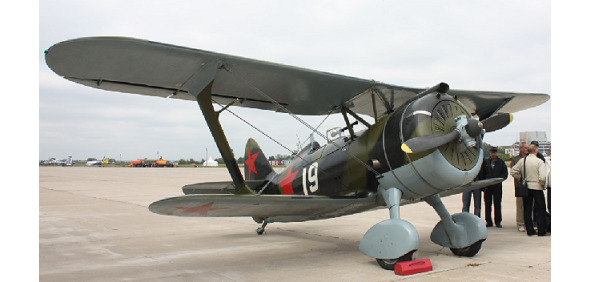

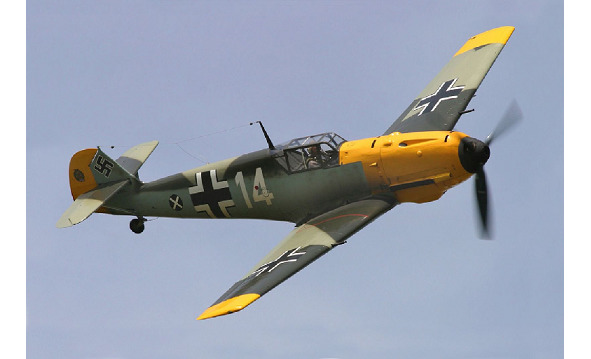
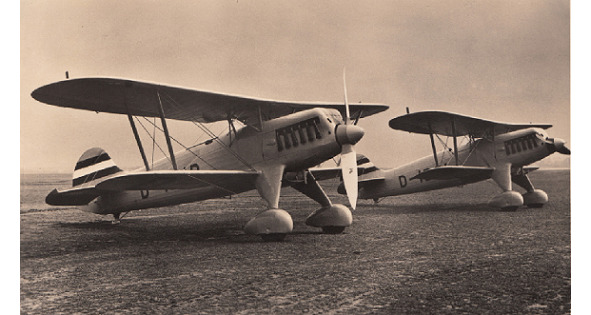
1. I-15 (Chato — «Pug-nosed»), a half-plane (the lower wing has a much smaller area) Polikarpova, four 7, 62 mm. machine gun, the speed of 370 km. h, the flight range is 750 km. On its basis, I-153 was created, a deep modernization of the I-15, «Seagull. Introduced retractable landing gear, appeared armored bump, the steel forms are more streamlined. Armament: four 7.62 mm. machine gun, 8 unguided missiles with 82 mm. shells, up to 200 kg. bombs. The speed is 410—430 km. h. The range of flight is 740 km. Put into operation by 1939 (after the war in Spain), quite successfully participated in the conflict at Halkin Gol. In the Finnish war proved to be mediocre. In the hot summer of 1941 it became finally clear that the development of the idea of biplanes, in addition to the short fuselage, of the wobbling «fatties» — Polikarpov’s big mistake. From 1939 to 1941, 3,427 aircraft were produced.
2. I-16 (nickname in the USSR — Ishak, Yastrebok, Spanish army, Franco — Rata — agile rapacious «Rat», Republicans «Mosca» — «Fly», in China — «Yanzi» — «The Swallow»). The first fighter is a low-grade aircraft in the USSR. Armament — four 7.62 mm. the ShKAS machine gun (the Shpitalniy and Komaritsky system, for the first time in the world, the rate of fire is 1,800 rounds per minute) or two 20 mm. guns and two 7.62 mm. machine gun. The speed at altitude is 450 km. h. The range of flight is 520 km. This is the maximum performance of an airplane with a single-row, star-shaped engine. The lantern of the cockpit can be closed completely, however, due to frequent seizures, the pilots keep it open (as can be seen in almost all the photographs). By 1942 inclusive (83 aircraft in the last year) produced 10 300 copies (not counting a few dozen, manufactured in Spain and China). Together with the «Seagull» brutal I-16 was the backbone of Soviet fighter aviation to the beginning of the Great Patriotic War. Led by an experienced pilot, he was not an easy prey, he tried to avoid maneuvering with him the aces of the Luftwaffe, saying that, they say; «You should not drive a rat into a corner.» However, the time I-16 passed.
3. Bf. (Me) — 109, Series B (Bruno), a fighter, was supplied to the Francoists in the second half of the Civil War. At that time had three 7.92 mm. machine gun. By the beginning of the Second World War Me-109 got four machine guns, or, in the other series, two machine guns plus 30 mm. a cannon with 60 shells. As an attack aircraft, he carried one 250 kg. the bomb. Speed — before modernization, during the war in Spain only 470 km. h, but by 1939, after replacing the engine (which became an unpleasant surprise, primarily for the British Air Force) — 570 km. h. In the mid-forties, its speed reached 620 km. h. The range of the flight is 480 km. In total, from 1937 to 1945, 34,000 Messerschmitts were produced.
4. Heinkel 51, the fighter of the Frankish first half of the war. Virtually had no chance against I-15. Armament — two machine guns 7,92 mm., Speed 310 km. h, flight range 550 km.
The rebels are changing the direction of the main attack and are crashing to the north of Spain — the Basque Country. April 26 German pilots destroy the city of Guernica. Strengthens his dictatorship Franco — his party «Spanish Phalanx» gets rid of internal opposition. At this time, the official Spanish government, which wants to achieve stability, completely purposely replaces a number of ministers. A single strong leader does not appear. The Republican army exhausts forces in fruitless frontal attacks of insignificant objects.
Organized according to the Stalinist patterns of the security service of the Republic, is being dealt with by prominent figures of the Marxist Party of Spain (Spanish POUM), is developing mass blind terror. Many Spanish Communists, as well as arrivals from all over the world interbrigadovtsy begin to get disappointed in their work, their morale is rapidly falling. The last successes Republicans achieve at the beginning of the offensive at the city of Brunet; (just west of the center of Spain), then they become entangled in contradictory orders, lose 25 thousand people against 10 thousand from the enemy, and together with them the original unity. On August 18, the republican units leave the front. 60,000 people are captured.
Italian submarines arrange a hunt for ships that supply goods still fighting in other theaters of military operations, Republicans. In early September, there is a sea battle; The Frankish flagship gets seriously damaged and departs from the convoy. Encouraged by this, insignificant in essence, success, the Republicans decide to hold a decisive offensive on land (Zaragoza, northeast of Spain). And again, their 80,000-strong group drains itself in unsuccessful attacks of secondary settlements, and then produces personnel personnel permutations that are also unnecessary to anyone. In early October, a new attempt is made to take Zaragoza. The main hope now is for 50 Soviet high-speed BT-5 tanks. Nationalists open floodgates of irrigation canals. Tanks bypass the appeared lakes, get bogged down in the mud, or far away from the accompanying infantry. The battle ends on October 17. Republicans lose 30,000 people killed and wounded, more than 30 tanks, francists — 20,000 people.
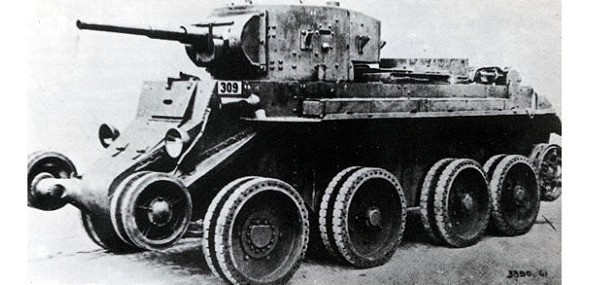
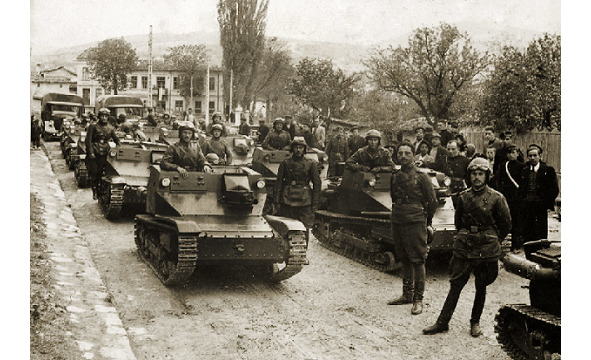
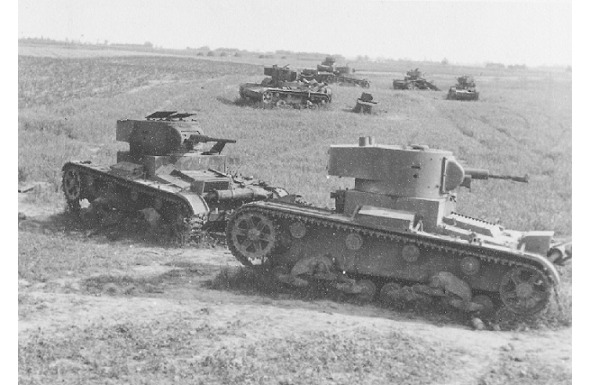
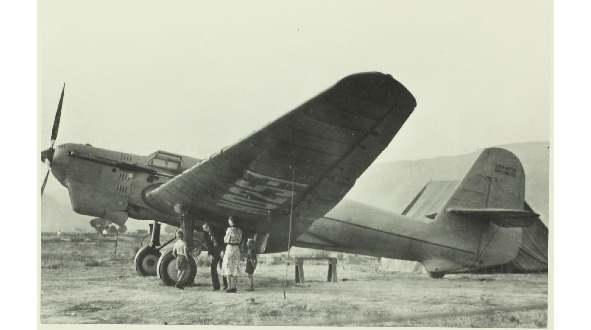
1. Wheel-caterpillar BT-5. Armament: 45 mm. gun, 115 shells, paired with a cannon 7.62 machine gun. Booking: the forehead, the side of the body 13 mm., The forehead, the side of the tower 13 mm. The speed along the highway is 52 km. h on caterpillars, 72 km. h on wheels. Crew of 3 people. Weight 11 tons. Power reserve on the highway on tracks 150 km, wheels — 200 km.; while the rubber rim wears out after 150 km. mileage. The specific power is 35 hp. (higher than that of modern tanks). Ground pressure 0, 65 kg. see with clad caterpillars, 5.65 kg. see on wheels. The number of vehicles produced from 1933 to 1934 — 1880. Most of the tanks lost in the first months of the war. Since 1942, the machines have basically been transferred to the rear, as training, a certain number of BT-5 has survived until 1945, participating, among other things, in defeating the Kwantung Army.
2. Waddress CV3 / 33 (Carro veloce CV-33), otherwise, by the name of the company — «Ansaldo». Armament: two 6.5 mm. machine gun. Booking: the forehead of the case is 15 mm., The board is 9 mm, the forehead of the felling is 15 mm, the board is felling 9 mm. Crew 2 people. Weight 3,5 tons. The speed along the highway is 42 km. h. The power reserve is 150 km. Specific power 12 hp There are 1400 copies produced.
3. T-26. Photo of the consequences of the late (1941) tank battle for Dubno-Lutsk-Brody. The first serial classic Soviet tank, which took part in many battles, was put into operation after many problems with non-working engines and assembly of hulls (including unarmored steel). Difficulties were removed after manufacturers were allowed to introduce changes into the original scheme related to the peculiarity of domestic technology, changes. Armament: the first series — 37-mm gun, 7, 62 mm. a machine gun in two towers, then, in a single-tower version of 45 mm. gun, two 7, 62 machine guns. Booking bulletproof: the forehead, the side of the body 15 mm., The forehead, the side of the tower 15 mm. The crew is three people. Weight 8 tons. Speed along the highway is 30 km. h, the power reserve is 120 km. I received the approving comments of the veterans of the Great Patriotic War — «for our time a good tank, without it we would have to be very difficult.» Prototype — English (two towers) six-ton «Vickers». Despite some difference in the reservation, he could hit his opponent, the German T-3 is almost as confident as he is his. But, the practical training of a Soviet tankman on a tank-boat is 6.5 hours (sometimes 300 meters, straight, and back to the hangar), German — 50—120 hours (practically, the armored car resource is burnt).
From 1931 to 1941, 11218 T-26 (half of the Soviet tank fleet at the beginning of the war) were assembled.
4. ANT-25. The aircraft, created in the USSR specifically for the establishment of world records (1933). The maximum flight duration is 75 hours, the range is 12 411 km., The speed is 240 km. h. Crew of three people. The military version is DB-1 (ANT-36), the cruising speed is 200 km. h, bomb load 1000 kg., combat radius of 2000 km. In this form, 24 cars were built, the air was rarely raised, and finally they were used as targets at the airfield.
June 18, 1937 ANT-25 with a crew from V. Chkalov, G. Baidukov, A. Belyakov takes off from the airfield Shchelkov (30 km from the capital) and makes a flight on the route Moscow-North Pole-United States of America. The landing takes place at Pearson Airfield, Vancouver, Washington (north-west of the USA), with a huge crowd of people. Later, the aircraft in disassembled form, on the ship gets back to the USSR, by our time finds shelter in the museum of Nizhny Novgorod. His double, who also flew to America, already under the control of the crew of M. Gromov, now resides in the museum of Chkalovsk (Schelkovo).
Due to his charisma V. Chkalov establishes a warm, trusting relationship with the Americans.
Returned back, became a world-class pilot, on the ship «Normandy», by coincidence, with the legend of the screen Marlene Dietrich, a German and American actress. Chkalov gives her bouquets of flowers, provides signs of attention, etc., up to the point where a steady rumor of a novel arises.
One thing is clear: such things as «soft power», records simply for the sake of records are often much more important for the security of the country than piles of expensive weapons and loud statements that «we will all beat you,» or: «Our friends — only the Army and Navy». The ANT-25 voyage contributed a lot to the creation of a favorable atmosphere for solving the issue of large-scale Lend-Lease deliveries in the critical year 1941 — without which, perhaps, the USSR would have lost the war.
After this, the Nationalists deploy an offensive in the North of Spain (the province of Asturias). Francists — 40 000 people, 100 units of armored vehicles, 250 aircraft, 250 guns, Republicans — 40 000 fighters, several self-made tanks, 20 aircraft, 80 guns. Nationalists apply their technique and human resources skillfully, without unnecessary losses, and achieve success. Their losses — 10 000 killed, against 30 000 irrevocable human losses of the enemy. But most importantly — the Republicans do not work the economy. The Communist leveling is negatively perceived by both farmers and highly skilled workers, not to mention the nominal owners of enterprises. Peasants do not care who levies from them an increased rent for land — landlords or bearers of bright ideals. Working committees eat government loans, hold rallies on any occasion, do not produce weapons for the army, preferring to him any useful, quickly sold goods. The salary of a militia fighter is 10 pesetas (plus food). In 1937, food prices rose sharply, albeit unevenly in different regions of the country. Kilogram of beef in Madrid costs 5, 75 pesetas, a dozen eggs 3.75, but also for these prices set by the republican government, it is almost impossible to «get it».
To top it off, the disappointed USSR and France recall their best military specialists. In the ranks of Republicans reign defeatism.
In the spring of 1938, a major offensive of the Francoists in the north-east of the country takes place. Italian air squadrons bomb Barcelona, the provisional capital of the Republic, capture part of the autonomous Catalonia, then turn to the south and cut the territory of the Republicans in half. In June, the nationalists are trying to develop success in the south, in Valencia, but run into a well-prepared line of defense, and bear significant losses.
At the end of November, Franco agrees that German companies will own 75% of the extractive industry capital in Spain and 100% in the colonies; after which Germany resumes large-scale military supplies. The republic also purchases equipment in the USSR on preferential terms, but France, after the Munich agreement, no longer wants to enter into a conflict with the Nazis, and stops military cargo on its border.
The Franco Armed Forces — 340,000 men, 300 tanks, 500 aircraft, are against the demoralized, badly armed 200,000-strong army of the Republic in Catalonia. Republicans do not accept the fight, they already have no bright ideals and interbrigades, along with 280 thousand civilian refugees they go to France.
After this, the nationalists without resistance occupy the remaining quarter of Spain. And, on April 1, dictator Franco declares the end of the civil war.
Irrevocable losses of the parties: francists (nationalists) — 130 000 people, Republicans — 320 000.
In addition, Spain loses 510 tons of gold reserves, settling in the USSR (declaring to the Spaniards much later that it was spent on them).
On the side of the Republicans fought about 2,000 volunteers — pilots, tankmen, sailors and military advisers. In battles and from various incidents, 189 people died, 56 received the title of Hero of the Soviet Union. General Pavlov (Pablo) experienced «cleansing», defined the task of creating an exclusively caterpillar tank with a powerful large-caliber (simply — long-barreled) gun, but later, as the commander of the Western Front, swept between the broken armies and divisions, in 1941, was shot. Generals produced 22 pilots, 7 of them in the coming years were repressed. Unfortunately, their idea of replacing the unstable many cadets I-15 (and also the I-16 and the «Seagull») with a new class fighter, was perceived as alarmism, and the proper response from the supreme leadership was not found immediately. In addition, the practical The experience of the confrontation of the Spanish pilots with German aircraft, as always in this system, is strictly classified, and there is no influence on the course of combat training in the Soviet Air Force.
Mikhail Svetlov (Sheinkman) in 1926 wrote the poems «Grenada», put to music by composers of 20 countries, which became a hymn to the interbrigades, since 1956 — a cult Soviet, or rather folk song. The song is good, but, perhaps, in its minor mood, it programmed the fall of the Spanish Republic. The idea that the death of one fighter does not mean anything, the detachment of this loss simply will not notice, does not attach, if you think about it, a positive. Won not the states for which the little man should give everything, but those who are ready to sacrifice much for their citizen.
At the same time, the fascist march, the unofficial German hymn «Horst Wessel» («Banners upwards»), clearly possessing some spiritual power, shows that, they say, then their troops notice the loss of fighters, and they are invisibly marching in the ranks of the surviving storm troopers. The Republican cry — «No pasarán!» — «They will not pass» is also, definitely, passive. Nationalists replace him with their less known, but more active: "¡Pasaremos!» — «We will pass.» In the end, four days before the end of the war, dictator Francisco Franco proclaims something that is very difficult to object: «Hemos pasado» — «We have passed.»
As part of the interbrigade fought, was, among other things, George Orwell (Arthur Blair). In his famous works «1984» and «Animal Farm», he, not without bitterness, shows the degeneration of revolutionary principles, a totalitarian system based on universal fear, enslavement and denunciation.
Francis lives until 1975, after which the post of the head of the country is occupied by King Juan Carlos. The country passes to parliamentarism and constitutional monarchy.
…In March 1938 there was an anschluss, otherwise, annexation, annexation of Austria. Previously, the state apparatus of this country is full of officials receiving a second salary from Germany and pursuing the corresponding policy; At the decisive moment they give the command not to resist the invasion. As a result of the «blindfold war», without losses, the Reich receives an additional 17%, territories and 6.7 million people, as well as 1.4 billion marks in currency and gold reserves. Austria becomes an administrative unit, called «Ostmark».
After the «Munich Collusion» with one of the centers of power in Europe, Great Britain and Germany, Sudetes with all defensive structures, populated by 90% ethnic Germans, and then all of Czechoslovakia are transferred. Poland does not want to miss Soviet aircraft to help the Czech Republic. Resistance is rendered only by one garrison, with the commander of which the higher authorities did not manage to contact in time: twenty-four German soldiers were killed and wounded during a forty-minute battle. In addition to 3.5 million ethnic Germans, Germany receives Skoda factories and six hundred fully ready-to-use, fairly good 38 tanks at that time (25 mm armor, 37 mm cannon, suspension close to the Christie system). England returns to the occupied country (hence, already Germany), taken out before that for storage of gold reserves — 1.4 billion marks. Slovakia becomes an independent state after it transfers southern territories to Germany’s ally, Hungary, 87% inhabited by the Hungarians. At the height of the Sudeten crisis, Poland enters its troops in the Teshinsky region, which belongs to Czechoslovakia, where 80,000 Poles and 120,000 Czechs live.
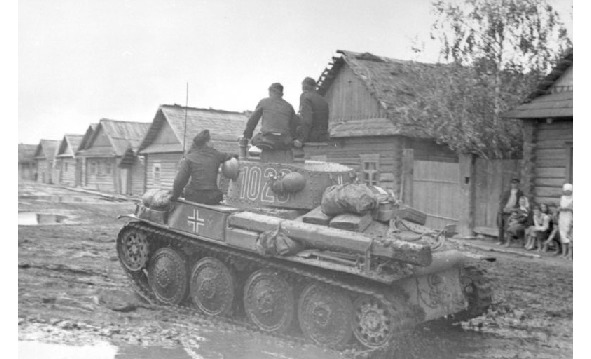
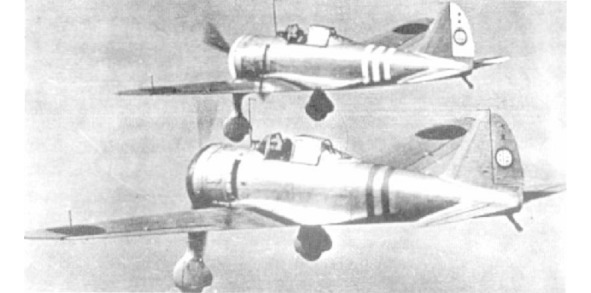
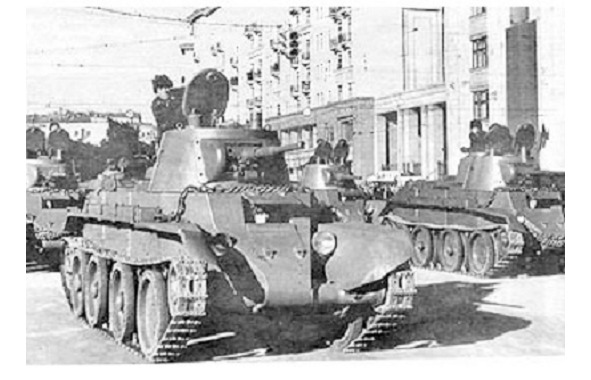
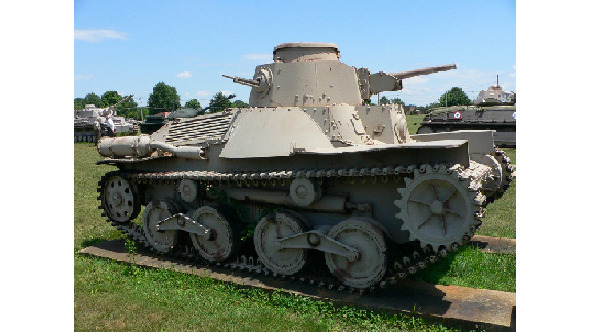
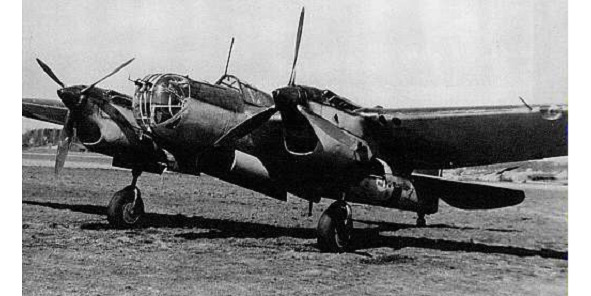
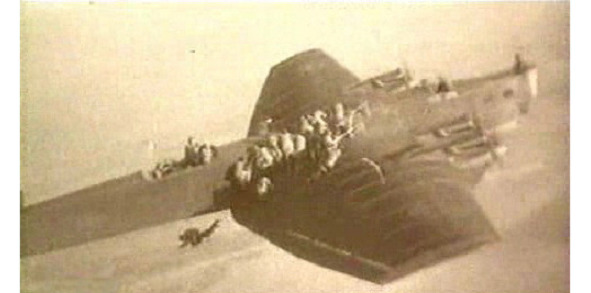
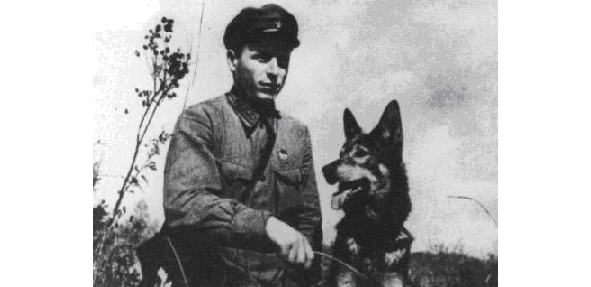
1. Quite a good Czech tank 38 (t). The «pigeon people» of Czechoslovakia never let them go against the Wehrmacht. In total, the enterprises of Skoda produced 1400 of them. The crew is 3—4 people, the forehead of the body is 25 mm high, the bottom is 12 mm., The hull is 15 mm., The forehead of the tower is 25 mm., The side of the tower is 15 mm. Weight 10 tons. Gun 37 mm, ammunition 72 shells, two machine guns, speed along the highway 48 km. h, cross-country 15 km. h, a power reserve of 230 kilometers.
2. Japanese fighter Ki-27 (in the USSR it was designated as I-97). Armament: two 7.7 mm. a machine gun with 500 cartridges per barrel. The speed of the earth is 395 km. h, at an altitude of 444 km. h. The range of flight is 627 km. From 1938 to 1942 produced 3,400 units.
3. BT-7. Armament: 45 mm. gun, 172 shells, one or two machine guns 7.62 (paired with a gun and aft). Booking: forehead housing 22 mm., Board 15 mm. (plus an outer layer of 4 mm.), the forehead, the side of the tower 15 mm. The speed is 72 km. h on wheels, 52 km. h on the tracks. Power reserve, 460 km. and 375 km. respectively, Crew 3 people. Weight 14 tons. Specific power 28 hp, ground pressure 0,85 kg. see (caterpillars). When driving on wheels, the front pair of rollers becomes controllable, the rear pair driving. Crawler — the steering wheel is removed, the drive from the transmission is sent to the «stars», the control goes to the levers. The destruction of rubber bands — after about 100 km. mileage. The tank performed well in Khalkin-Gol, mediocrely — in the Winter War, differing in the worst side of the T-26 by its high fuel consumption, the noisiness, the complexity of the double drive. In the Great Patriotic War with varying success was used until 1942, after almost universally transferred to educational units. The last participation of BT-7 in military operations — the defeat of the Kwantung Army, 1945. From 1935 to 1940, 5330 vehicles were produced.
4. Ha-Guo, Type 95. Japanese light tank. Armament: 37 mm. gun, 75 shells, two 6.5 mm. machine gun. Booking: the forehead, the side of the body 12 mm., The forehead, the side of the tower 12 mm. speed on the highway 45 km. h, cross-country 25 km. h. Cruising range, respectively: 250 and 210 km. Crew of 3 people. Weight 7.5 tons. Specific power 16 hp, ground pressure 0,66 kg. See Manufactured 2300 machines.
5. ANT-40 (SB). High-speed (medium) front-line bomber, development of design bureau of AN Tupolev. Armament: four 7, 62 mm. machine gun ShKAS, 600 kg. bombs. Speed: maximum 450 km. h, cruising 375 km. h. The range is 2300 km. The crew is three people. Due to a fairly successful design, it was manufactured under license in pre-war Czechoslovakia: after annexation, all aircraft were placed at the disposal of the Reich and its satellites. Operated since 1936 in Spain, the Republican troops, where it was called «Katyusha» and (at the disposal of the francists) «Sofia», also in the Khalkin-Gol, in the Winter, Great Patriotic War.
Most of the Security Council was destroyed in the first weeks of the Great Patriotic War; In addition, the lack of armor protection for the crew and vital units, and the lack of training of the flight crew, were reflected. Further, the ANT-40 was used as night bombers, to transport saboteurs to the rear of the enemy, as well as various kinds of cargo; ammunition, food, mail, etc. 6656 units were produced.
6. TB-3 (ANT-6). Soviet heavy bomber. Armament: from 4 to 8 7.62 mm. Degtyarev’s machine guns, the bomb load — normal 2000 kg of bombs, the maximum — 5000 kg. The speed of the land is 200 km. h, at an altitude of 180 km. h. The chassis are not retracted. The flight range is 3100 kilometers. The crew of 6—8 people. Successfully applied in the battles on Khalkin Gol, for their intended purpose, day and night, with the Soviet air force in the air, also for the evacuation of the wounded (15—20 people aboard), the delivery of goods. In the Winter War proved to be mediocre. It made up 25% of the Bomb Air Force by June 22, 1941, was based deep in the rear, so it almost did not suffer from Luftwaffe attacks. When daytime bombing targets carried heavy losses, but as a night bomber proved to be the best side. The Red Army was used up to the Battle of the Kursk Bulge. From 1932 to 1938, 818 vehicles were produced, completely ANT-6 was decommissioned in 1946.
7. One of the characteristic persons of the Stalin era — border guard Nikita Fedorovich Karatsupa, Hero of the Soviet Union. Birth — the village of Alekseevka, Zaporozhye region, Ukraine. Detained 338 violators of the state border. Personally, he destroyed «129 spies and saboteurs who did not lay down their arms.» In essence, this «right man» is a maniac killer of hundreds of unarmed Russian peasants who fled the Soviet regime and the GULAG abroad, possibly trying to explain the essence of their situation to the military detainee, but not receiving any response other than smirking or bullets.
Armed conflict between Japan and the USSR in Halkin Gol
In the Japanese version, with Russian transcription, it sounds like «Nomon-khan jiken» — «The incident with Nomon Khan,» by the name of one of the local heights. Some historians consider fights at the river Halkin-Gol the Second Russian-Japanese war.
Since the twenties of last century Mongolia is a protectorate of the USSR and, nominally — a socialist country. Attacks on it are already considered a matter of the Soviet Union. Therefore, when in May 1939 militaristic Japan, unhappy with the demarcation of the border with the Mongolian People’s Republic, attacks Mongolian outposts near Lake Khasan, according to the Protocol on Mutual Assistance of March 12, 1936, the Red Army interferes.
Ground-based battles along the river Halkin Gol, considered by the Japanese as the «right» border with their puppet state on the territory of China («above» Korea and more than three times), are conducted with varying success. The main events unfold in the air. Since May 22, for two days the Soviet fighter regiment is losing 22 I-15s, the Japanese — one. On an urgent basis, the pilots who showed up in Spain, as well as the newest I-16 and Chaika fighters, are called to the place of the conflict. From June 22 to June 28, the Japanese Air Force lost 90 aircraft, the Soviet Air Force lost 38 aircraft.
Since July 2, the Japanese ground group is moving into a large-scale offensive near Mount Bayan-Tsagan. In the battles participate up to 400 tanks and 300 aircraft from both sides at a time. Soviet troops quickly commanded by G. Zhukov. He manages to rectify the situation, although L. Beria sends the 1st rank commissioner L. Mehlis (a serial killer of the higher officers of the Red Army) to «check» the commander of the group of troops. The army commander’s psyche is stronger.
The Japanese side is losing 9,000 killed, almost all tanks and most of the artillery.
At the end of July, the intensity of military operations on the ground is declining. Again, fighting is in the air. Japan loses 67 aircraft, the USSR — 20. This is a prelude to a decisive blow by Soviet and Mongolian troops on August 20. The forces of the parties: the USSR-Mongolia — 30 thousand people, 500 tanks, 580 aircraft. Japan — 20 thousand fighters, 120 tanks, 450 aircraft. The army of the country of the Rising Sun is surrounded, crushed and destroyed. The day of the truce, on September 15, is crowned with an impressive air battle — 207 Soviet aircraft against 120 Japanese. Finally, «de jure», the conflict ends in May 1942; the parties find a compromise on the basis of some geographic map found in the archives.
Losses of the parties: the USSR — irretrievable losses of 10 thousand people, 250 tanks, 210 aircraft. Japan and the Union of Manchukuo, according to the averaged data — 36 thousand people, 300 tanks, 400 aircraft.
The Soviet-Finnish War of 1939—1940
Ideas of Great Finland, uniting the peoples of the Finnish-Ugric group; Finns, Karelians, Estonians, from the Gulf of Bothnia to the Ural Mountains, are spreading with the separation of Finland proper from Russia in 1918. The Government of Suomi sends a petition to the warring Germany; conclude a Brest peace with the condition of joining Finland (an ally of the Austro-German Empire), East Karelia.
In the course of their own civil war, on April 29, 1918, the White Finns capture Vyborg, arrange the genocide of all people who do not speak Finnish (retired military, schoolboys in Russian uniforms, even Poles). Three thousand people die.
On May 15, 1918, the Finnish government declared war on Soviet Russia. Its troops occupy, in particular, the Russian, from the 16th century, Pechenga, rename the name of this village in «Petsamo». Later, large deposits of nickel ore will be explored here, since 1935 their industrial development by Anglo-American corporations will begin.
The Finnish military partially block Petrograd, contributing to the first great famine in this city (according to averaged data, one hundred thousand people become victims of it, as well as «red» terror). At the rate of Mannerheim, a plan for «national uprisings» is being developed, Finnish instructors are being allocated to create centers of insurgency. However, the plans of the Field Marshal to conquer East Karelia, the Kola Peninsula, the offensive against Petrograd, Germany does not support. After the Vyborg tragedy, any joint operations to overthrow the Bolshevik government along with the Finns, the White Army refuses to conduct either.
By May 1920, parts of the Red Army were eliminating the puppet North-Karelian state. In October of the same year, Finland and the USSR signed the Tartous Peace Treaty, according to which Russia was losing part of its territories. However, in 1921 Helsinki unleashed the second Soviet-Finnish war, by forces of «forest partisans» committing acts of sabotage and killing of supporters of Soviet power. The fighting ends in March 1922, a document is signed to ensure the inviolability of the Soviet-Finnish border. About 30,000 people dissatisfied with the new order go to Finland and, up to the end of the 1920s, armed groups formed from them, make raids on Soviet territory.
Whatever it was, the mood in Finland does not seem friendly to the Soviet government. His proposal — the removal of the border from Leningrad at the expense of Finland, in exchange for twice the size of the areas of East Karelia. Rent of the island of Hanko to create a Soviet military base. Disarmament and demolition of the «Mannerheim Line» on the Karelian Isthmus. Finland rejects these conditions.
Military operations begin after the delivery of an ultimatum, on November 30, 1939, from shelling (ships of the Baltic Fleet) and the bombing of Helsinki. The Soviet Union is excluded from the League of Nations. European countries supply Suomi with weapons, including free of charge (350 aircraft, 500 guns) and volunteers. For two months the columns of Soviet troops advancing along the forest roads are being cut by Finnish skiers, surrounded and destroyed. This is no longer the Halkin Gol. In February, having saturated the troops with heavy artillery and tanks, having increased the norms of food allowance, the USSR is making progress in the breakthrough of the Mannerheim Line; On March 13, Soviet troops enter Vyborg. The world lies. Irrevocable, severe losses of the USSR — 130 000 people, 650 tanks, 640 aircraft; Finns — 26 000 people, with 450 000 refugees, 62 aircraft. From the Finnish captivity, 4,354 people return, and are being filtered by the NKGB GUGB. 450 of them are released, the rest receive from 5 to 8 years of camps.
This military operation could have a special meaning if the USSR kept Petsamo (Pechenga) with the reserves of nickel ore, much needed by Germany’s military industry. However, the international community, including, above all, the UK, is strongly opposed. The area Petsamo returns to the Finns, and they organize a large-scale supply of nickel to the Axis countries.
Pechenga will join the Russian Federation only in 1944.
Among the advantages in the combat training of troops, after such a harsh school, is the abolition of the institution of political commissars, the experience of breaking through long-term fortifications, the winter war as a whole, and the return to production of a submachine gun (PAP).
Cons, in addition to the hardest losses — the German government understands that, in principle, is able to achieve all-round success in the war against the «colossus on clay feet».
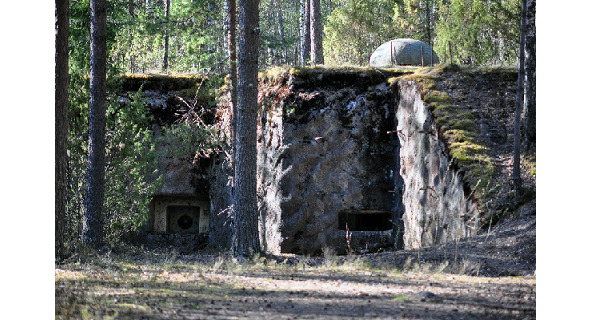
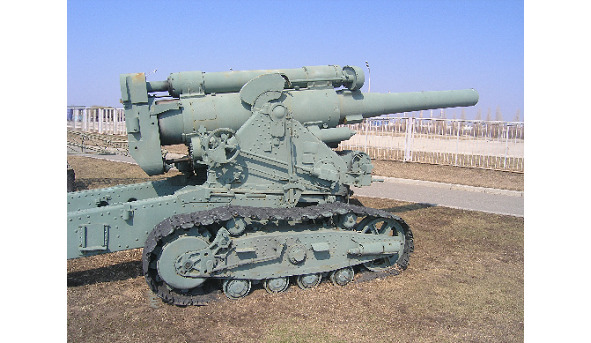
1. Dot line Mannerheim second generation, «millionaire» (name of the amount in the Finnish stamps expended for the erection). The thickness of reinforced concrete walls is 2 m, the length of the structure is 30 m. Conventional armament is two 76 mm. guns, antitank 37 mm. guns, machine guns. Addition — ditch, mines, barbed wire, concrete bungs. In total, the second generation of BTs is built 7.
2. Howitzer B-4, caliber of 203 millimeters. The main hero of the Finnish war. The nickname «Karelian Sculptor», for the fact that this instrument turns Finnish dots into a kind of avant-garde statues. The parameters of Finnish DOTs are «million»: the length is about 40 meters, the thickness of the walls of reinforced concrete is 2 meters. The result of action B-4 — if not the penetration of the walls, then the psychological impact on the defenders of the DOTs. Many of them, after a long bombardment of the B-4 went crazy.
The entry of the Baltic countries into the USSR
In October 1940, the Soviet Union invites Estonia, Latvia and Lithuania, under a mutual assistance agreement, to deploy a military contingent of 25,000 troops on their territory to defend themselves against Hitlerite Germany. It is already clear that the Red Army is inclined to achieve its goals, regardless of any losses. Two weeks later, the governments of these countries are accused of collusion with Germany (which is partly true), repressions against foreigners (Poles, etc.) and are shifting. In the summer of 1940, following the results of nationwide voting, the republics are formed by communist governments and adopt declarations of entry into the Soviet Union; which are immediately approved by the Supreme Soviet of the USSR.
According to the documents of the NKVD of June 17, 1941, in Lithuania, 5,663 people, mostly secret police officers and «classical capitalists», were subject to detention, 10,186 in Latvia, 5,624 and 9,547 in Latvia respectively, and 3,179 and 5,979 in Estonia.
President of Lithuania Antanas Smyatona wisely emigrates to Germany, then Switzerland and the United States. His Estonian counterpart Konstantin Päts is deported with his family to Siberia, receives 25 years of camps, since 1942 is kept in a prison psychiatric clinic, he died there in 1956. The head of Latvia, Karlis Ulmanis convinces the people that «friends have come», actively cooperates with the new, pro-Soviet government, and in particular, publishes the «Law on the fight against wrecking». Somewhat later he begins to understand the situation, asks the Kremlin for permission to travel to Switzerland, but eventually ends up in the NKVD camp near Krasnovodsk (Turkmenistan), where, in 1942, he dies.
The Second World War
Occupation of Poland
The territories of Poland, acquired by Germany at the expense of Germany under the Treaty of Versailles (West Prussia and part of Silesia), prevent the Reich from uniting with East Prussia, the «cradle of German militarism», its sacral center. After negotiations on the creation of a land corridor, or at least the transit of goods through Poland without bureaucratic obstacles, September 1, 1939, the invasion begins simultaneously from Germany, Slovakia and Prussia. The Polish Air Force, having existed for three days, shoots down 130 Luftwaffe aircraft. On September 22, the bombing of Warsaw begins: 1,150 aircraft drop 4,500 tons of bombs, and on September 28 the Polish military command (the civil government takes refuge in France) signs an act of surrender.
On September 17, Soviet troops enter Poland to restore Western Belorussia and Western Ukraine, captured during the Russian-Polish war of 1920, to protect the Belarusians, Ukrainians and Jews who are there, respectively. The main idea: if Poland shows enough courage in confronting Hitler, it is actively assisted by France and England, the Wehrmacht meets a worthy rebuff, the status quo is observed on the part of the USSR. The obvious victory of the Germans, inclined, of course, to occupy the entire territory, means the entry into the game of the Red Army.
Part of Poland — the Vilna (Vilnius) region with 490 thousand inhabitants are transferred to Lithuania. Some territories pass to the satellite of Germany — Slovakia. Refused to accept Soviet citizenship 78,000 refugees (including Jews) from Germany occupied by Poland, are deported back, or receive 20 years of camps.
Losses of the parties: Poland — irretrievably 63 000 soldiers and officers in the battles with the Wehrmacht, 420 000 in German captivity, 230 000 in the USSR (ordinary and non-commissioned officers are dismissed to their homes, in 1942 most of them, in agreement with England, bypassing Iran, joins the British forces, forming the army of General Anders or Sikorsky), as well as 357 aircraft of different types. Germany — 15 000 killed, as well as 319 armored cars and 285 aircraft (as a result of air crashes, air defense and fighter operations). Soviet troops (RKKA) — 2,000 dead, 17 tanks and 10 aircraft. Poland: irretrievable losses in battles with the Red Army — 3000. Slovak army: 18 people.
So, in the war included England and France, who acted as the guarantor of Poland’s security, but the first six months of fighting on their fronts are almost not conducted. Flyers prefer to scatter leaflets («confetti»), rather than bombs, over postings of the enemy, «We will not shoot at you if you do not shoot us».
Hitler is interested not so much in the island of the foggy Albion, as in the English dominions. Even if you capture London, the government will move to the territory of one of the colonies, and the fight will continue indefinitely. Honorary peace with the Anglo-Saxons, the Nordic race, equal, according to the Fuhrer’s admission, to the Germans themselves, the delineation of the territories of influence is what Germany wants.
Benelux countries
Denmark and Norway. They are threatened with the capture of two centers of power: England and Germany. Denmark tends to the protectorate of Germany, the leaders of the country give the order not to resist the invasion; which took place in March 1940, and cost the life of thirteen Danish and two German soldiers. The Reich acquired a good supplier of agricultural products, a dozen of warships, as well as a 6,000-strong volunteer corps, who fought on the Eastern Front until his disbandment in 1943.
In April 1940, German warships attacked the British-assisted Norway and, by June 16 of the same year, seized it. The irrevocable human losses of the opponents are approximately equal: the Norwegians have 1,400 men, and also 60,000 prisoners, the British 1800, French and Polish 500, Germans about 4000. Allied forces are deprived of a total of 15 warships, including the aircraft carrier, Germany — 34 large and 10 small; these losses make the landing operation in the UK questionable. As a result of the submarine war, England is losing 485 ships, which is one third of the merchant fleet: Germany exchanges them for its 9 submarines.
On May 10, 1940, Belgium and Holland receive an ultimatum from the German command with reproaches in violation of neutrality — the unhindered passage of British aircraft over their territory, as well as the construction of long-term fortifications facing Germany. The note calls on Holland not to prevent the German troops entering the country, not as enemies. which, however, by this time already are on the land of the Netherlands. The government of the country of dams and cheese requests assistance from the British and French, their expeditionary corps is being put forward to establish contact with the Dutch.
German paratroopers seize the strategically important bridge from Rotterdam, which allows German tanks to block all large Dutch infantry units. Under the threat of bombardment of Rotterdam, a demand is demanded for full surrender of the state. The ultimatum is accepted, however, as a result of a mistake, or deliberate action of 60 Heinkel 111 bombers, 97 tons of bombs are dropped on the city. Holland surrenders five days after the outbreak of the war. Losses of the Dutch side: 2330 soldiers and officers, 70 aircraft, (68 Typhoons lost by the British Air Force), as well as 2,000 civilians, German — about 3,000 military, 275 aircraft.
The idea of an ambitious German officer, Erich von Manstein, is to attack the Anglo-French army, superior in number (4 million to 3 million Wehrmacht fighters), through the mountain (Belgian) Ardennes, from the north, through the forces of a few but unified tank units, the Fuhrer.
Invasion of France
The battle continues to unfold in neighboring Belgium, where the combined French, English, Belgian troops, and Wehrmacht forces converge on May 10—11. The first, truly grandiose operation of the Germans begins almost a failure: in the vicinity of Luxembourg, a motorized column of 41,000 units of equipment, a bumper to the bumper, stands in a 250-kilometer traffic jam. However, the confused allies and do not subject this light, desired goal to the bombing. Finally, 1,100 tanks break away from the concentration of infantry and break through the mountain serpentines to Belgium. Three days later, steel cars, with carriages filled with primitin, almost unimpededly cross the borders of France.
Of the battles of this period, one should note the first major tank battle at Ann, where 623 German (mainly Panzer 1—2) and 415 French (Renault, Gochkis, practically the same) tanks came together. The shortcomings of German armored vehicles were revealed — thin, 14.5 mm. armor and weak 20 mm. gun, against 45mm. armor and 37 mm. Guns tanks, Gochkis, whose crews, incidentally, consist of only two people. The tactics of the Panzerwaffe — beating with a single steel fist, with clear coordination over the radio and the clear purpose of the operation being conducted, shows superiority over the manner of the opponents to place the non-radiofected tanks in a shaky line. Belgium surrenders on May 28, its armed forces are getting out of the fight. Places of battle are moving to French Dunkirk. The movement of the German panzerwaffe is hampered by the rugged terrain; They also do not aspire to enter the zone of action of the large-caliber naval artillery of the British. Surrounded by Anglo-French troops, taking advantage of the bad weather, interferes with the actions of aviation, they are evacuated by the sea, leaving all their heavy equipment to the enemy. The idea to create here a springboard, a splinter in the body of fascist Continental Europe, is not considered.
Italy enters the war on the side of Germany; although its 300,000-strong army does not have much success, it completely demoralizes the French, and, on June 21, in the Compiegne Forest, where the Treaty of Versailles was signed 20 years ago, France’s surrender is announced.
The loss of Belgium: 6,000 people irrevocably, 202,000 prisoners, as well as 112 aircraft, France 84,000 killed, 1.8 million prisoners (the majority are sent to forced labor in Germany), 50 aircraft. Great Britain — 68,000 people, about 1,000 aircraft, 64,000 vehicles, Germany — 18,000 soldiers and officers on German data and 45,000 according to estimates of English historians, 432 aircraft. In addition to the developed French economy, Germany receives 2,000 combat tanks (used against guerrillas or converted into ACS), 1,400 aircraft and a 7,000-strong French volunteer legion. Part of the navy, in order to avoid its seizure by the Germans, together with 1,200 sailors, was destroyed by British aircraft (Operation Catapult), the remaining ships were sunk by the French themselves in 1942. The Catapult, coupled with the British preference for its soldiers during the evacuation from Dunkirk, led to the unwillingness of the French military in the French colonies (Syria, Senegal, Lebanon), to join the struggle against the Axis countries, and, in some cases, active resistance to the allies.
Meanwhile, the gold of the French National Bank, on the battleship Richelieu, on June 19, 1940, leaves the port of Brest and is heading for Senegal. He is adjoined by precious metals from Poland, Belgium and the Netherlands. Later, this charm falls into the hands of the Americans, and returns only seven years later, according to the Marshall plan, in the form of loans to, exclusively American goods.
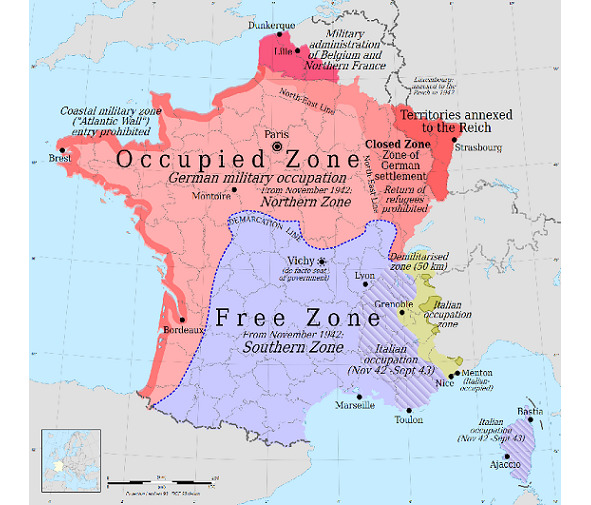
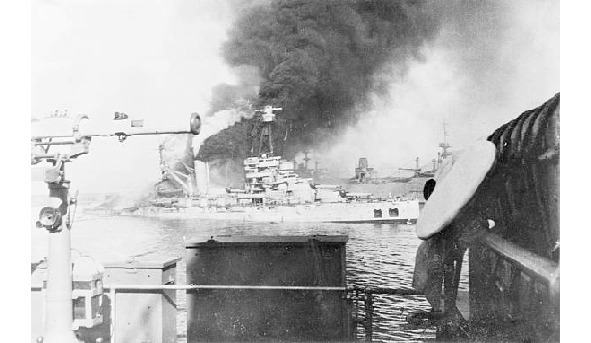
1. Occupation of France by Germany and Italy.
2. Flooding of a part of the French fleet of Vichy France by naval forces and British aircraft (Operation Catapult, also the Anglo-French War of 1940).
Bessarabia and Northern Bukovina. On June 27, 1940, the government of the USSR sends an ultimatum to the Romanian government demanding the return of Bessarabia (rejected by Romania in 1920) and Northern Bukovina, as compensation for the exploitation of the population of Bessarabia. A few hours before the start of the Soviet invasion, the Romanian king accepts all his conditions. Territories are divided between Soviet Ukraine and Moldova. The population of Bessarabia, numbering 3.7 million people, indeed, which underwent many humiliations and terror from the Romanian authorities, as a whole is loyal to the Soviet government. Ethnic Romanians and Ukrainians (85%) Bukovina, 0.8 million people who did not feel this kind of attitude, regard annexation without enthusiasm.
Italy has its own interests, primarily in Africa, where it intends to win back British colonies — Egypt, Kenya, Sudan, Ethiopia, part of Somalia. He wants to take also Greece, he puts forward an ultimatum demanding that it be given the opportunity to occupy certain strategic objects. To help the Greeks come Britain, Union Australia. Defeated, Mussolini asks for help, and, in February 1941, the expeditionary corps of General Rommel arrives in Libya. German troops beat off the British north-eastern part of this country (Cyrenaica), go to the borders of Egypt, after which the front stabilizes.
Soviet-German relations are cooled on November 12, 1941 at the talks in Berlin; Molotov is denied accession to the countries of the Triple Alliance (Axis) as a full partner with interests in Finland, Southern Bukovina, Bulgaria, Greece and Yugoslavia, as well as Turkey (Straits).
Yugoslavia and Greece
Yugoslavia. On March 25, 1945, the Prime Minister of Yugoslavia signed a protocol on the accession of his country to the Tripartite Pact; the same day in Belgrade is an 80-thousand demonstration against the alliance with Germany, which, in addition, is marked by the defeat of the German Information Bureau. A new government is being formed, and, on April 5, the USSR and Yugoslavia sign a treaty of friendship and non-aggression.
These events Hitler views as an excuse for an invasion. And, on April 6, the armed forces of Germany, Italy and Hungary enter Yugoslavia. On Belgrade, 2,000 tons of bombs fall, on April 16 the Yugoslav army surrenders, 344,000 people are captured (Croatians, Hungarians and Germans-Volksdeutsche are later released). Irreversible losses: Germany 165 people, 40 aircraft, 3 tanks. Italy 3300 people, 13 aircraft, 11 tankettes. Hungary 130 people, 1 airplane. Yugoslavia: 5,000 military, 57 downed, 150 aircraft destroyed on the ground.
Greece. For some political reasons, the seizure of Yugoslavia prompts Hitler to render more effective assistance to his Italian allies. And, on April 6, 1941, from the territory of Bulgaria, German troops invade Greece. Athens is captured on April 27, after another three days Greece will capitulate. A month later the Wehrmacht invaded the island of Crete, considered primarily as an airfield for control of the Luftwaffe in the Mediterranean. The large losses of paratroopers do not allow further operations to be carried out to capture Cyprus and the Suez Canal immediately. Losses of Greece: 14,000 killed, allies 900, with 14,000 prisoners, the Wehrmacht 1,450 killed, Italy — about 20,000 people.
It is believed that the need to seize Yugoslavia, as well as the stubborn resistance of Greece, delayed the start of the invasion of the USSR from May 15, 1941 to June 22, and these five weeks had a decisive effect on the course of the entire war.
Clash of the Titans
Count the forces of the warring parties. The population of the Soviet Union according to the results of the 1939 census is 170 million. It should be borne in mind that the leaders of the 1937 census, who showed the result of «only» 162 million for «undercounting» of the population, were shot. In 1940, territories with a population of 18 million people were annexed to the USSR, though not always loyal to the new system, having a different mentality. We assume that the results of the «shot» population census are the only correct ones, then by 1941 the population of the colossal state was 180 million people.
The Third Reich, 1941, ie, Germany, Austria, the Sudetenland and some other territories inhabited by ethnic Germans subject to conscription — 90 million people. Hungary — 9.3 million (there were 800,000 Hungarians killed on the Eastern Front), Romania — 20 million (453,000 people died). These two countries are the unconditional allies of Germany, whose human reserves it could dispose of as its own. The contingent of volunteers in 64 thousand was allocated by 44 million Italy (during the war years the corps was renewed several times, 374 thousand were killed), and 25 million Spain — 18 thousand hours (irretrievable losses of 15 thousand). Slovakia — 36 thousand hours, 3 thousand people died, Croatia 2,200 people, the number of dead is unknown, Finland — about 300,000 people, losses of 70,000 (against 108,000 Soviet losses on this front, including 18,000 people killed in captivity)
Wehrmacht also owned resources, the industry of France, Norway, Belgium, Holland, Denmark, Poland, Greece, Bulgaria, Yugoslavia and the Czech Republic.
The only ally of the USSR was at that time a 47-million United Kingdom with 1.2 million (including parts located in the colonies), battered after the Dunkirk army. Her war with Germany until 1944 is similar to a ritual battle, a knight tournament, where, according to established rules, knights with knuckled gloves and all sorts of ammunition seize. England had 1500 aircraft, a dozen aircraft carriers, many cruisers, destroyers and submarines. After Dunkirk, the British did not have more than 100 tanks, but thanks to the developed industry, their number constantly increased. I fought here rather, the technique, not the people.
The interest of Germany, whose people’s spirit is now ruled by the ancient German gods, lies in the Northeast. According to the plans of the Hitlerite command, German colonies on the territory of the USSR should be organized on the model of Ancient Sparta, with an autochthonous population reduced to 50 million, turned into slave-helots, respectively.
The beginning of the war. On June 22, 1941, Germany and Romania join the war with the USSR. The basis of military operations for Bucharest is understandable — the year-earlier exclusion of Bessarabia and Northern Bukovina. A day later, Slovakia entered the war. On 26 June, Kosice, which was Slovakia three years earlier, was bombed by unmarked aircraft, but, at that time, Hungary. 27 tons of bombs were dropped. It is still unclear whether this was the Soviet air force, bombed the city because of the confusion and obsolete maps, Germanic or even Romanian (to push the opposing ally to active action), but on June 27, Hungary declared the USSR a war.
Almost at the same time, on June 25, Soviet aviation strikes at several settlements and 18 Finnish airfields. On some of them, German planes were actually based, formally, Finland was one of the Axis countries. On the same day, Suomi declares war, and by the end of the year he occupies a large part of Karelia, including its capital, Petrozavodsk (which has become Einislinna). About 70,000 civilians (from non-Finn-related peoples, according to racial anthropological surveys) are taken to Finnish concentration camps. Later, one third of them will die from malnutrition, disease and ill-treatment.
Further on this topic: «I reject Christianity, because it is the product of Judaism, because it is internationalistic and because it preaches peace on earth.»
(Adolf Gitler).
In general, we can say that the entire people of the USSR, the Soviet Army (RKKA), are moving towards God during the war, and Germany (the Axis countries), on the contrary, step by step, move away from it. «God is with us,» the inscription engraved on buckles of belts becomes an empty formality. In the second half of the war, the funeral rites of SS men are most often conducted, according to the pagan custom of the Vikings, with the Lebens rune (the rune of life, something like an arrow pointing downwards, or a trident, or Toten-Rune, or Tyr-Rune) on the grave, instead of a cross.
The Battle for Dubno-Lutsk-Brody
On June 23, the battle for Dubno-Lutsk-Brody (320 km west of Kiev) starts. The General of the Army G. Zhukov, who came to the scene, rejects the idea of the Chief of Staff of the South-Western Front to withdraw troops and create a solid defense line. The new plan was an immediate strike by five mechanized corps in 2,800 (later 3,100) tanks for four (subsequently — five) German tank divisions of 720 tanks and 70 assault guns.
Wehrmacht connections, in addition to combat vehicles, include large units of infantry, artillery, and also highly skilled repair brigades. Bulky (about 400 tanks) mechanized corps make marches of 300 km, losing at least only a mechanical breakdown of at least a quarter of the machines.
The Soviet system of production of military equipment allegedly does not provide for the release, delivery, not even worth a half-word, of «small things» for repair, for example, gaskets or tank tract. Guidelines for driving and servicing the newest tanks, at this time — are classified even from potential mechanics. Sometimes, so carefully stored from the crews of the car, at the most crucial moment refuel not with diesel fuel, but with gasoline.
Approximately the same situation in the Air Force. In order to avoid any breakdown of equipment, getting accusations of wrecking, the most unfortunate consequences, the lower command is gradually sabotaging real military training. To realize how this or that thing works, one must at least break it down — it’s a simple, but an immutable truth. The fact that in the German educational units is punishable with salty jokes or a reprimand to a newcomer, the Red Army may end in execution.
Perhaps, it can be argued that in a society of formal equality and the «territorial organization of the community», any sign of distinction is qualified, no less than an accessory to a special caste. The Commander of the Red Army at all costs aspires to secede from the soldiers’ masses, although of course this does not go as far as in the Tsarist army. These maxims completely agree with the author’s observations during his time in the army of the Soviet, and then Russian. The German army from the middle of the nineteenth century implies, with (paradoxically) the strict observance of subordination, the attitude of the officer to the soldier as an equal to himself. Cohesion, a trusting relationship to each other, even, as it is said there, on the basis of blood ties, determines the high level of command and control.
So, there are counter tank fights near Kiev, sometimes successful, more often — no, massive frontal offensives on the positions of German anti-tank guns, maneuvering without communications and normal maps, separation from supply and repair lines. The result: by 30 June the Red Army loses 2,600 tanks, the Wehrmacht — 180 (irretrievably). The entire South-Western Front is crashing down.
Stalin realizes the reality of such a picture: he is confronted with a group of German generals, with Hitler, compelled to answer their questions, unimaginably small and pitiful. This Dzhugashvili does not like, and he, even if not immediately, begins to make more or less correct decisions. The principle of eliminating problems, before — to see only the good, to discard all that is not part of smart plans. If someone talks about dying of hunger — they should be made to confess to espionage to Britain, and the question is solved. Twenty years after the Revolution, the people live worse than in 1914 — let’s say that this is not true, and the end is the matter. In Moscow (supply in a special category), after the cards have been canceled, thousands of queues are snapping around the stores — comrades from the NKGB warn the townsfolk without proper registration, that their next visit to the capital will be punished by article for speculation — and the crowds quickly disappear. Why bother with the actual development of the production of this boring consumer goods? The Scout believes that the Finns will not take the bread and salt of the Red Army — he should be summoned to Moscow and eliminated. It is the same with reports of the situation with the preparation of troops, or Hitler’s plans for an invasion. Those who express unpleasant, should be removed — and everything becomes pleasantly quiet.
But, this time, if we do not see the armored columns of the Wehrmacht, they do not cease to exist, and the mental image: Stalin before the smiling German military is becoming more real.
The first orders are to «shoot». It does not get better from that. Earlier, it was possible to establish ubiquitous deathly silence. Now the clanking of the caterpillars of German tanks is becoming more and more distinct. The commanders are getting cold hands, blood is pouring from the brain, resentment is rising in the chest — nothing more.
Stalin has to set aside executions, empty slogans, and solve the problem, now delving into the essence of what is happening. The control system is reconstructed into a real solution of the problems. This works from the second half of 1942, to May 45th, and, for two and a half years, allows you to get away from almost complete collapse to victory.
In the absence of a threat to the personal well-being of the leader, in the second half of 1945, the former system of interaction of power with the people experiences, as they say, renovation. Collective farm barns are full of grain, but the winners’ children everywhere tear up trash heaps in search of potato peelings. Disabled amputees are loaded into freight cars and taken away, out of sight, into «closed boarding schools», in fact — the prison of the GUGB NKVD.
The international community is very sympathetic towards the Soviet Union, the call for help to such a fiercely fought country, would have found a response if, of course, it was. It is possible to prescribe doctors, medicines, medical equipment, wheelchairs, etc. from Europe, America, to extend food supplies, taking into account that all this would have been paid for by Germany after the restoration of its economy, and so on. But, such a tedious «trifle» as public health and dying of hunger children, as they say, «below the level of the Kremlin.» The threat of an iron cage in the Reich Chancellery for the head of the country has already ceased to exist. Not wishing to lose face before the world community, Stalin and others like him, prefers to keep silent as before, and, to justify his rule, he is looking for new enemies (or unreliable friends).
Unfortunately — the method of «silencing the problem», is still valid in Russia. But, what happened 75 years ago gives us hope. It is only for the people to start doing what they really need, stop spending energy and money on crazy state projects, listen only to the heart — and in just two and a half years we will reach the glorious heights…
The encirclement of the Soviet armies near Smolensk and Kiev. The first assault on Sevastopol
On July 16 Army Group Center captures Smolensk and surrounds 24 Soviet infantry divisions. Approximate losses of the parties by that time — Germany — 95 000 dead against 760 000 (and 300 000 prisoners) of the USSR. It seems that resistance has ceased in the central direction, and panzer divisions are heading south — to seize Ukraine, and north, to Leningrad. An offensive against Moscow is supposed to be conducted by infantry divisions alone. The Soviet command is trying to seize the initiative, but ill-prepared attacks are only depleting mechanized corps. By that time, for all reasons, the Red Army lost about 12,000 tanks, the Wehrmacht — 700.
…August 13, the last train leaves from Odessa to the east. German-Romanian troops completely block the iconic seaside city. On the whole, defense is hasty, but the Stavka decides to withdraw troops to the Crimea, to strengthen Sevastopol. By October 16, the evacuation of 85,000 Red Army soldiers of the Primorsky Army, 15,000 civilian, 20 T-26 tanks and 25,000 tons of cargo is coming to an end. Irreversible losses amount to 18 thousand on each side.
The Anglo-Soviet invasion of Iran (operation «Consent») will be held on August 25. Without declaration of war, the forces of the British Empire attack the Shah army from the Persian Gulf, the Soviet units from the Transcaucasus. The main strike force of the Red Army is about a thousand T-26 tanks, the Caspian Flotilla, the British — the fire of ship artillery and the Air Force. Many large cities, including Tehran, are bombed. Hundreds of civilians die. In the time of peace, the Iranian army is densely packed with money, but it is even more corrupt. The Iranian divisions soon lose control (the higher officers try to leave the battlefields), crumble, surrender to more or less honorable captivity. Some parts intend to fight to the end, however, on August 29 the shah gives the order to lay down their arms.
On September 17, the Red Army and British units enter Tehran. A month later, having formed a loyal government (of course, now no one connected with the Germans) the allies withdraw their forces from the capital. The country is divided into Soviet and British zones of influence.
According to the peace treaty, Iran is declared an ally of Britain and the USSR. The parties undertake to withdraw all troops within six months after the cessation of all hostilities.
This operation has a prehistory — the occupation of Iraq by Great Britain. Action: May, 1941, landing of the expeditionary force in Basra, air force strikes against airfields, railway and other facilities. The Germans are trying to come to the aid of their allies, but, why not without due enthusiasm and scope. As a result, the British establish control over Iraq’s oil fields, and in the future — they are given the opportunity to conduct a stable corridor for military supplies to the USSR.
Losses of the parties in the Anglo-Iraq war. Britain — 1200 people, 30 aircraft, Iraqis — 8,500 troops, as well as 20 German, 4 Italian aircraft.
Losses during the occupation of Iran: the USSR — 50 people irretrievably, 3 aircraft. Britain — 25 people, 8 aircraft. Iran — 800 troops and 300 civilians.
The outcome of the operation «Consent» is the almost unimpeded delivery of more than 5 million tons of military cargo to the belligerent USSR. A small additional bonus to the Union — a significant part of the grain harvest of Northern Iran is spent on subsistence for the army.
…In March 1946, the Soviet tank columns moved to Tehran and the borders of Turkey. The idea of Stalin — the creation of a puppet «people’s government», the inclusion in the USSR of Iranian Azerbaijan. These acts, as well as the logical and rigid response of the Western countries, will be one of the reasons for the unfolding of the Cold War.
…But now, in the autumn of 1941, the seizure of a considerable country of the East — it seems only a small drop of honey in a huge barrel of tar.
...In July-September, the encirclement of four Soviet armies near Kiev-irrevocable losses, including captives, 700,000 people, practically, their entire initial composition. Wehrmacht lost 30,000 soldiers and officers. In the northern direction, near Leningrad, the front is stabilizing, the USSR is losing 344,000 people against 60,000 German troops. September 30, with the participation of tank groups returning from the north and south, the offensive against Moscow is resumed. The forces of the parties: the USSR — 2 million regular army (including Siberian, ie, Far Eastern divisions), 0.2 million militias, 450 aircraft and 1,000 tanks. Army Group «Center» — 1.9 million people, 1,700 serviceable tanks, 780 aircraft. Germany is accompanied by a major initial success — in Vyazemsky Kettle captured 688,000 Soviet soldiers and officers, only 85,000 are able to escape. On October 15, the Defense Committee decides to evacuate Moscow, and on October 16, the capital encompasses a panic that ends on October 20, with the imposition of a state of siege.
…October 30 will be the first storm of Sevastopol. November 11, after shelling with coastal batteries, two cruisers and the battleship «Paris Commune», the Wehrmacht pauses. The wounded are evacuated by the sea, and on the Douglas (Li-2). The most effective here are submarines. German Heinkel He 111 torpedoes «Armenia» transport with 6 thousand wounded. 8 people are saved to escape.
On December 28, parts of the Transcaucasian Front, 40,000 fighters, with the support of the Black Sea Fleet ships, land the landing in Kerch, on December 29 — in the region of Feodosia. The only German division left Kerch, and the Kerch itself, throwing all heavy weapons.
Simultaneously, tactical diversions are landed — in Yevpatoria, on January 5—8, 700 people and Sudak, January 6—28, 1942, 3,500 airborne troops. At the same time, there is practically no interaction between the naval command and the ground forces. Such things as radio stations, although they are in the units, but are really used very rarely. Remaining without communication, assistance, in general, the sense of disembarkation (interaction with the main forces), the assault forces are destroyed.
Prisoners, as a rule, are shot.
It should be noted that the USSR:
1) In 1918, officially informs the International Red Cross that «international conventions and agreements relating to the Red Cross, recognized by Russia before October 1917, are recognized and respected by the Russian Soviet Government, which retains all rights and prerogatives based on these conventions and agreements». (the newspaper Izvestia No. 112 (376) of July 4, 1918). Here, in particular, refers to the agreements of the Hague Convention on the Laws and Customs of Warfare, including the paragraph on the humane treatment of prisoners.
2) On July 2, 1929, the representatives of the USSR signed the Geneva Convention on the humane treatment of the wounded and sick soldiers of the enemy, leaving behind the brackets of the healthy. Proposals are being made to abolish the mandatory separation of officers and rank-and-file officers, wearing insignia, money-making, etc. The published official Soviet document, on the whole, is even somewhat more humane than Geneva. The situation with the formulation of the second part of the International Convention, however, is being blown up by diplomats, is already considered to have been decided by itself, and hangs in the air.
3) According to Article 82 of the Geneva Convention: «If, in the event of war, one of the belligerents is not participating in the convention, nevertheless the provisions of this remain binding on all belligerents, the convention of signatories.» In other words, Germany would have to abide by this treaty already because it was adopted and ratified by itself.
Despite all this, the German leadership considers it possible to manipulate the non-signing of the USSR by the Geneva Convention, justifying the shooting of Soviet prisoners of war, or giving them 50% of food as compared to non-Soviet prisoners. They are echoed by modern Russian «khivi».
The actions of German soldiers are reminiscent of the actions of insects — those creatures that you can not tame, shake or appease. In the end, the very widespread thesis at the beginning of the war: «the Germans — the cultural nation» comes completely to nothing. And the attitude to the newcomers is also such as to harmful insects — they need to be insensibly destroyed.
The German Luftwaffe dominates the sky. In the afternoon, the ships of the Black Sea flotilla are dispersed far into the sea, approaching the shore usually at night or in inclement weather. Nevertheless, the bombers of 8 Von Richthofen air corps (300 aircraft) in addition to the forces of the 4th Air Fleet (one IV air corps, about 350 units of all kinds) collect their abundant harvest. Covered in concrete caponiers, Soviet planes enter air battles and attack ground targets rarely; their main meaning now, it seems — is the expenditure of German shells on the destruction of shelters.
Instead of assistance, the Crimean front as a whole seems to only distract the forces and supplies of ammunition from the besieged Sevastopol. Wehrmacht draws to the city 1,100 only large-caliber guns. The largest of them — installed on railroad tracks in the mountain tunnel «Dora», the diameter of the trunk is 800 mm., From a distance of 30 km. produces 53 unsuccessful malorezultativnyh shot (4-ton shell): and on that, her work ends. Two more 150-ton self-propelled tracked mortars «Karl», caliber of 600 mm, are more effective. They produce hundreds of 2-ton shells, smash the multi-meter walls of strategically important forts. It also shoots 420mm howitzer Gamma Mörser (projectile 1 ton), which has survived since the First World War. In addition, many hundreds of guns, 210 mm, 300 mm, contribute to the destruction of the city. and 350 mm.
On January 15, Manstein’s forces strike at the junction of two Soviet armies near the village of Vladislavovka, and capture Feodosia. Instead of a swift advance towards Sevastopol and Perekop, the Red Army is now following a viscous positional struggle; dozens of unproductive attacks on pre-prepared positions. Since the beginning of the landing, Soviet troops are losing 100,000 people. The front stabilizes on the Ak-Monai Isthmus (from the base of the Arbat arrow to the south, Primorsky, the former frontier of the Bosporus kingdom). The supply of three armies with a total strength of 420 thousand men, each with 250 T-34 tanks, 300 aircraft, is now carried along the ice of the Kerch Strait.
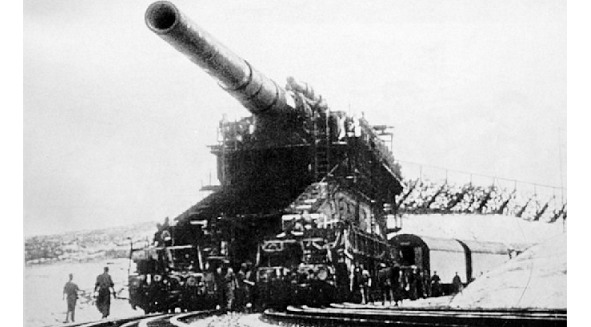
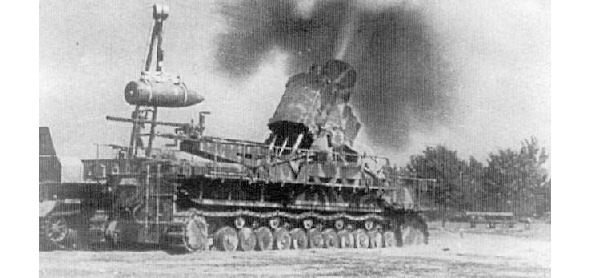
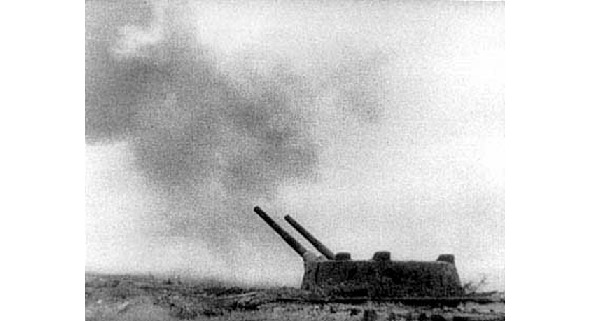
Counteroffensive of the Red Army near Moscow. Rzhev-Vyazma, Rzhev-Sychev and Luban military operations
On December 5, the Soviet command decides on a counter-offensive near Moscow, which, even with the numerical superiority of German troops in technology and people, is generally successful. Irrevocable losses of the parties since the beginning of the offensive against Moscow from Smolensk: the Soviet Union — 940 000 people (including 200 thousand people’s militia recruited in the capital), the Wehrmacht — 120 000.
As the next stage, from January 8 to April 20, 1942, the Rzhev-Vyazma operation is carried out. The general plan is, with a shortage of artillery and, in general, heavy equipment, to cut and destroy enemy troops advancing through forests and ravines with infantry units. He failed, in particular, because of Stalin’s personal decision to attack immediately on all fronts, without concentrating forces on certain directions, with a clear goal. The result: the losses of the Red Army about 320,000 people killed and captured, the Wehrmacht is unknown, according to some sources, 90,000. Further, on July 30, the offensive continued as a Rzhev-Sychevskaya operation, now with massive use of tanks, and ended on October 1, approximately the same the number of losses from the Soviet side — 300 000 people, as well as 1,100 armored cars; the losses of the Wehrmacht are unknown.
From January 7 to April 30, 1942, the Luban offensive operation is conducted. The goal is the lifting of the siege of Leningrad, the liberation of Novgorod, the collapse of the entire German front in the North. Soviet armies have incomplete personnel, a quarter of the ammunition, inadequate supplies; they enter the breakthrough section two kilometers wide and spray the blow in different directions. Practically there are no radio stations, telephone cable, even sights for guns. At all levels of government — an amazing inconsistency of action. Four armies exhaust forces in attacks, the fifth, the 2nd Shock falls into the encirclement. When an order is issued to retreat, there remains 500—800 meters for the exit, which is permanently guarded by only six to eight tanks KV and T-34. For three days with interruptions, 12 thousand people pass through it, almost all the wounded and sick. Losses of the Soviet troops — 300 000 people, German — is unknown.
Unfortunately, not many songs are composed about this, there are almost no films and books «in the bull’s eye». About exploits and losses speak little, except for, say, speeches, such, it turns out, an intelligent historian on the «Echo of Moscow», accompanied by the giggles of his interlocutors. It corresponds to the spirit of the times «Leningradskaya zastolnaya», verses of the front-line correspondent P. Shubin:
…Let’s drink to those who commanded the companies,
Who was dying in the snow,
Who in Leningrad made his way through the swamps,
Throat breaking enemy
Of the relatively modern songs, you can recall, perhaps, only the works of the folk singer V. Vysotsky. Total war is a mixture of smells, sounds, memories; feelings, which can hardly be expressed in a logical order of words:
Kolos in the color of amber — will we have time?
No, it turns out that we sow
What is the color of amber shone there?
It’s in the field the fire is rushing
Dispersed all of the troubles in the parties
Songbirds are no more — crows
(Storks, Аисты)
It should be noted that the author of this book tries to distance himself from those fans of discussions at historical forums that emanate saliva, evil snickers-spit and bile, when it comes to the losses of the USSR in the first years of the war. For them, everything is initially bad — tanks, planes, people, in the humiliation of heroes or simply confused soldiers, they seem to see the greatness of their own personality. No arguments on them do not work, and you do not want to spend mental energy on those who can not be corrected. This text is intended for those who are able to deeply experience History, possesses the mind and heart, and wants to make a better future by breaking the past into small details.
…Simultaneously, on January 7, 1942, on the northern front, the offensive of Soviet troops begins in the vicinity of the city of Demyansk. On February 8, a cauldron with 6 German divisions, including Tottenkopf, with a total strength of 100,000 people, is being formed. The German Air Force is organizing an air bridge, which delivers up to 265 tons of cargo per day. (Approximately the same number in the air was received by the Second Shock Army in three weeks.) Here, in particular, they shoot down the Yak-1 with the legendary man Alexei Maresiev, the one who will later destroy 7 Luftwaffe aircraft flying with foot prostheses. On May 5, the blockade was lifted. Losses of the parties — the Red Army — 245,000, including 9,000 people who participated in the whole, failed Demian landing operation. Wehrmacht — 55 000 troops.
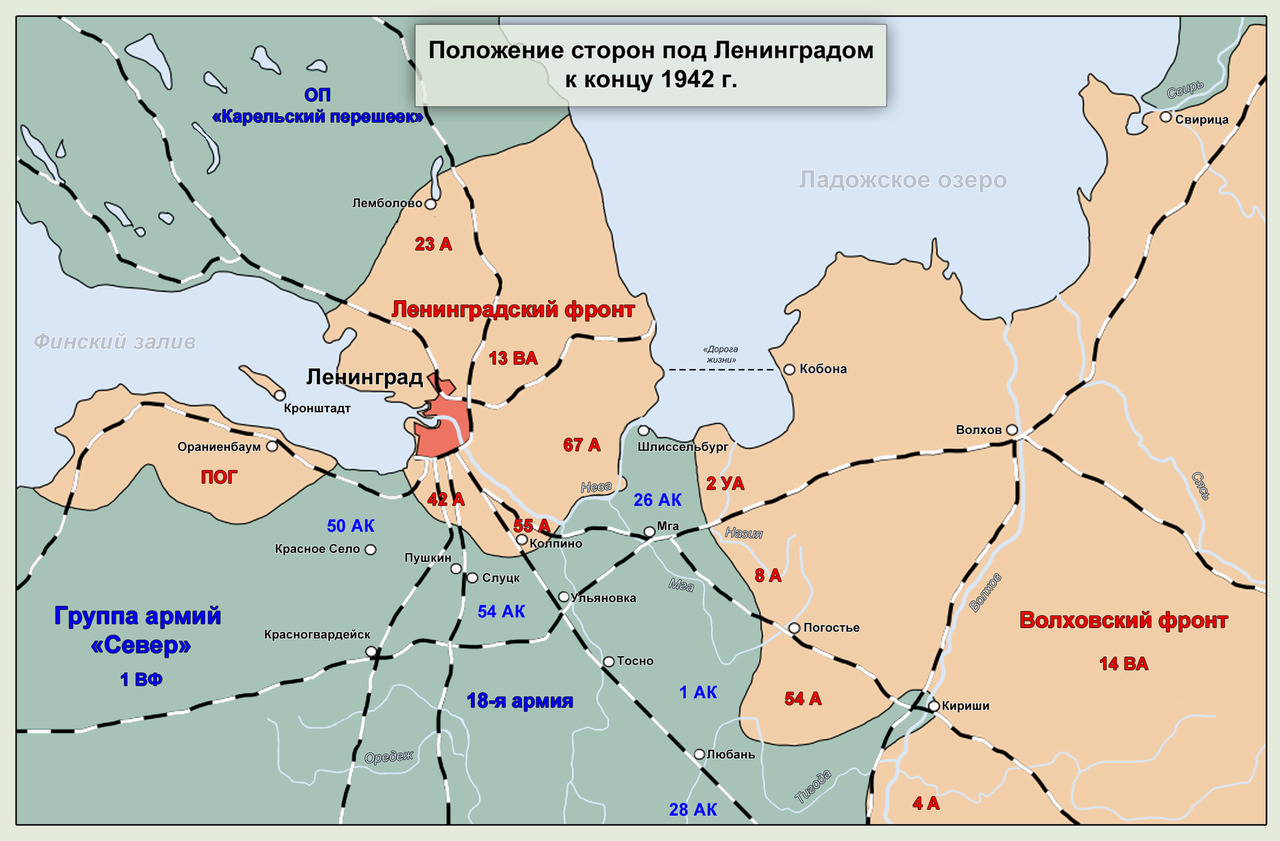
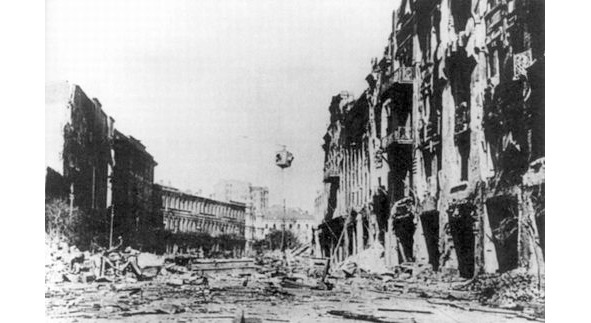
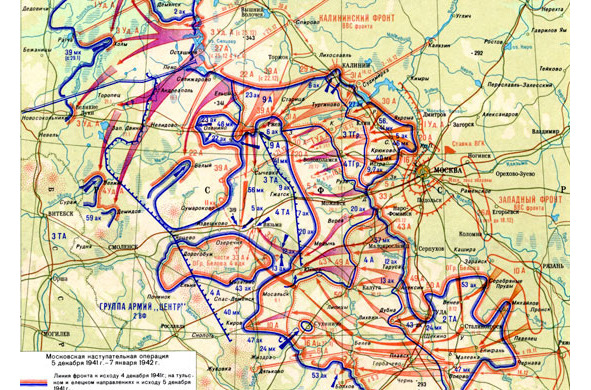
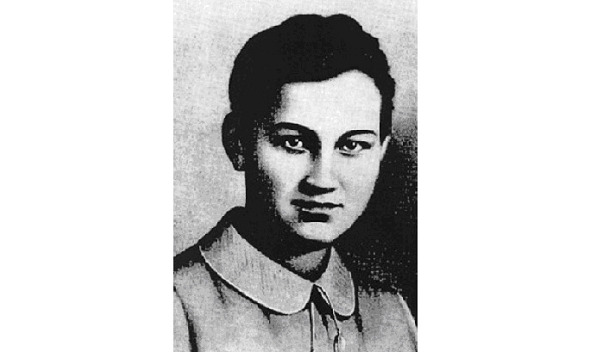
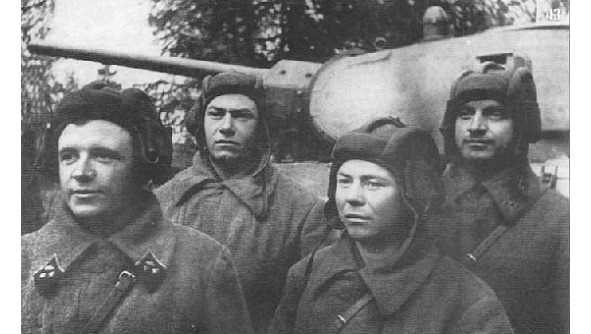
1. Map of the encircled Leningrad, 1942. To the south of the village of Mga, near the river Volkhov — the village Myasnoy Bor, near which was surrounded by the 2nd Shock Army.
2. The ruins of Kiev. During the fighting, the city and its main street, Khreshchatyk, suffer relatively little. But, on September 24, starting from the «Children’s World» a series of powerful explosions takes place, leading, in addition to the primary destruction, to a fire that destroys the historical center of Kiev. The fiery storm lasts two weeks. 940 buildings are turning into ruins. There is an opinion that the Germans organized the explosions in order to justify the subsequent total destruction of Jews in Babi Yar, but a documented version — the mining of buildings by special sections of the People’s Commissariat of State Security (NKGB), led by Colonel Alexander Goldovich. The chief of the engineer troops is Andrey Vlasov, the future collaborator, the head of the ROA.
It is not known how many invaders perished from this sabotage, what material damage was inflicted on the Wehrmacht. The meaning of this is when the owners are burned at home, leaving their homes beforehand — as happened in Moscow in 1812. Quite accurately, the action prompted many Ukrainians, who had already been shaken by the Holodomor of 32nd year to cooperate with Hitlerite Germany and the armed confrontation of the USSR.
In the so-called. Babi Yar — a ravine on the outskirts of Kiev, 1.5 km long, 50 meters deep, since autumn 1941. By 1943, the occupiers were shooting 170,000 Soviet POWs, Jews, including women, the elderly and children, who until the last wish to believe in the «census» and «resettlement», OUN members, A. Melnik’s groups who did not agree to cooperate, etc. an experimental soap factory, to make soap from bodies, but the Germans do not have time to put it into use. In 1950, the city (Soviet) authorities decided to fill the ravine with waste from neighboring brick plants. The mixture does not wish to solidify, and, in March 1961, breaking through the earth dam, rushes to the houses. As a result of the Kureniv tragedy (by the name of a neighboring village), one and a half thousand people die.
3. «Thin red line» near Moscow, autumn 1941.
4. Zoya Dmitrievna Kosmodemyanskaya, 1923 — November 29, 1941, a Red Army soldier, a subversive group fighter, Hero of the Soviet Union. Parents — teachers who escaped, or exiled to Siberia, grandfather — a priest, shot by the Cheka. 1940 — treatment in a sanatorium for nervous diseases, acquaintance with (writer) Arkady Gaidar lying there. The Komsomol member has a painful gap between the dream (about the universal brotherhood of people) and the harsh reality surrounding it.
Zoya is to the place of gathering of volunteers at the (Moscow) theater of the Colosseum, sent to a sabotage school. On November 27 in the village of Petrischevo, a group of three people set fire to three peasant houses, killing 20 horses. On November 28, Zoya, having missed his comrades, decides to continue arson, is seen by the master of the house, a certain Sviridov, who summons the Germans. The girl calls herself Tanya. She was driven for 4 hours in the cold, subjected to beatings. To tortures are joined by local residents, whose houses are burnt by partisans. One of them said before execution: «Who did you harm? My house was burned, but nothing was done to the Germans! «The last words Zoe roughly convey the demographic situation in the country «You do not outweigh all, we are 170 million.» Other sources, for better agreement with the second census of the population, distort words to «two hundred million».
The body remains in place of execution for about a month, subject to the outrages of German soldiers. Later it will be buried at the Novodevichy Cemetery.
The whole situation looks rather clumsy, just does not fit into the head, causes controversy to this day, releasing a certain psychic energy. In nonsense, a special meaning is born. Zoya Kosmodemyanskaya did not show herself in a loud military success. But the more true it joins the pantheon of the people’s martyrs (to which, of course, officers can not belong, in full safety, mincing the «Children’s World»). The article in Pravda, January 27, 1942, produces an impact on Soviet citizens, comparable, it seems, with the advent of a battle-worthy tank corps. Kosmodemyanskaya is the same person as very many in the Union, somewhat confused, awkward, realizing that, after the disappearance (built at the expense of humiliation, sweat and blood of millions of people), the mountains of weapons, almost all the personnel of Stalin’s army, have to fight independently, at least somehow, almost from scratch.
5. Crew of the Hero of the Soviet Union Dmitry Fedorovich Lavrinenko, Soviet tank ace (leftmost). On the account of the initiative senior lieutenant of the Red Army (which was, at the same time as the T-34 at the same time, a gunner) 52 German tanks destroyed. The basis of tactics is a combination of actions from ambushes with sudden attacks of a small (3—4 cars) combat group, with well-conducted reconnaissance. These actions come into conflict with the Charter of the Red Army of 1941 — according to which one should always attack the enemy without hesitation, using tanks massively, like some kind of «all-destroying steel avalanche».
Lavrinenko dies on December 18, 1941, after 2.5 months of battles and 28 fights, from a fragment of a mine. Repeatedly presented to the title of Hero, honored him in 1990. The position of the Ministry of Defense of the USSR, and personally, the head of the personnel department, I. Gusakovsky, prevents it: «Dmitry Lavrinenko’s relatives will demand special privileges.»
On May 7, 1942, the Wehrmacht attacks the Soviet troops, concentrated on the Kerch Peninsula (the front line from Kazantip Point to the Black Sea), bombard the previously known targets, never changing their location, and also the ways of retreat. Prior to this, the representative of the Stavka, L.Z. Mehlis completely suppressed the initiative of the commanders, forbidding the construction of defensive structures, even digging trenches, in order «not to bring down the offensive spirit.» Three armies are lined up, side by side, in a limited area of 18 to 6 km, with no reserves in Kerch. Some parts are being evacuated through the Kerch Strait to the Taman Peninsula (140,000), 55,000 people are dying, and 120,000 are taken prisoner. German and Romanian irretrievable losses amount to 10,000 people.
Until the beginning of the eighties, the tractor drivers refused to plow the isthmus of the peninsula between Feodosia and Kerch; The fields are dotted with bones, fragments and ammunition.
The encirclement of the Soviet armies near Kharkov. Barvenkovsky trap. The Third Assault of Sevastopol
May 12, guided by Stalin’s order «to ensure that 1942 was the year of the final defeat of the German fascist troops,» the Red Army is conducting an offensive near Kharkov, with the aim of encircling the «South» grouping, pressing it to the Sea of Azov and destroying it. The blow is inflicted on the three armies of the enemy already prepared for their offensive, including one of the tank armies. The troops advance 20—35 kilometers, then the Wehrmacht tanks cut their weakly protected communications. Escape from the «Barvenkovskaya traps», by May 31 can only a tenth of the encircled troops. Losses of the parties: Red Army 170,000 irretrievably, 120—150 thousand prisoners, 1,240 tanks, Wehrmacht — 7,000 German and 3,000 Romanian soldiers, according to other sources, a total of 18,000 people.
Now the forces of the Axis countries practically do not meet resistance in the vast steppes, they occupy Rostov-on-Don, they reach the approaches to Stalingrad. In the North Caucasus, they manage to approach the city of Grozny (bombed oilfields), capture Krasnodar, Stavropol and Novorossiysk.
June 7 begins the third assault on Sevastopol. Before that, the Luftwaffe bombers liberated from the eastern direction dropped 2,500 tons of bombs of 1,000, 1,800 and 2,500 kg to the city. By June 17, the attackers come to Sapun Mountain: a hill with which it is possible to aim at the whole city and the water area of the Northern bay.
Because of the increased activity of artillery, aviation, German and Italian torpedo boats, the supply of ammunition becomes impossible. The last Sevastopol, in the morning dusk on July 27, leaves the leader of Tashkent, a high-speed destroyer (70 km at full speed), taking 2,500 people from the city, being attacked by 90 Luftwaffe aircraft; loses its course, is towed to Novorossiysk. On July 29 the Wehrmacht forces capture Malakhov Kurgan, set artillery on Sapun Mountain. This is the key point. The next day, the units of the Red Army and the Navy begin to destroy military equipment, supplies and funds. The commander requests permission to evacuate the Stavka, and receives it. The Supreme Commander, 222 people, and 49 wounded are taken to the Caucasus on the 13th, withdrawn from the concrete caponiers Li-2. Another 700 commanders are evacuated by submarines. Further, the command and rank-and-file officers mix on the shore and, in general, lose their status differences. They are taken away by high-speed boats, captains of which come ashore at their discretion, in any place, in the seemingly most suitable moment. So another three or four thousand people are saved.
The remnants of the Maritime Army withdraw to the Cape of Chersonese and (with only 1,000 shells) fight for three days. July 4th all ends. In the German captivity are 75 thousand soldiers of the Red Army.
The forces of the parties on June 6, 1942: the Red Army and the Marine Corps 118,000 men, 100 aircraft, 40 tanks, 450 guns of artillery, 150 coastal artillery guns (100—305 mm), 1,700 mortars. In this case, 305-mm cannons are only in the most effective 30th and 35th batteries, only 4 towers with two guns in each. Wehrmacht and the Romanian Armed Forces: 204 thousand fighters, 1,000 aircraft, 170 tanks (ACS, StuG III), 1,300 guns of various types, 700 mortars. Losses for 8 months of siege: the Soviet Union — 155 thousand killed, including city residents, 75 thousand prisoners, a dozen large surface ships, two submarines, about 70 aircraft (some transferred to the Caucasus). Wehrmacht and Romania: 65,000 irrevocably (three quarters of the losses are ethnic Germans), about 250 aircraft, 230 tanks (including captured from the Red Army) and ACS. The 13-division divisions of the German-Romanian troops who took part in the last assault are given a 6-week rest, they are transferred deep into the rear or to insignificant areas. Returning from vacation Manstein discovers that on the spot, in the Crimea there are only 4 of them. Thus, a swift move, planned by the Field Marshal through the Kerch Strait, to the Caucasus, to the oil fields of Baku, will not take place.
June 27 almost completely destroyed, deprived, by order of W. Churchill escort of warships, convoy «PQ-17»; the supply of food and arms has been stopped. Aviation and submarines sunk 22 ships of 35.
To this day, there is an opinion that, in fact, the ships in the caravan were initially less than the declared number; the incident was only an excuse for canceling supplies to a clear «outsider».
In June 1942, the human resources of the USSR, the large European part of which is in the zone of occupation, and Germany (especially the Axis countries) are equalized. Three of the four main industrial regions are captured. Almost the entire personnel Stalin army — 4 million military, in captivity.
What in such conditions can be at least a tiny, barely noticeable, but correct step to an apparent unthinkable victory?
…In 1931—32, the country was hit by a famine. They are affected by the Holodomor, first of all, Ukraine, the North Caucasus (Kuban), the Volga region. There was no drought. Some put forward such exotic versions as plant diseases — the so-called. rust, and even ergot. The harvest of 1932 was only 40% of the norm — this is a fact. Another version; in central Russia it was historically taken to plow on horses, and in Ukraine, and, generally, in the south, for this purpose, oxen were used. During the collectivization of 1930—31, almost all the personal livestock had to be given to the collective farm. Not wishing that their property was used by some strangers, in many respects hoping for «maybe», peasants pinched and ate their draft power. With horses, it was not customary to do this, both for ethical and nutritional reasons. Some fields in the south of the USSR remained unsown. The tractor purchased in America often had a number of difficult removable flaws. But the central authorities firmly demanded the fulfillment of the plan for grain procurement. Since the beginning of the thirties, grain has been ordered, under pain of severe punishment, to be stored in collective-farm elevators, where it can easily be confiscated for state needs. The volunteers of the new power, the pioneers, looked for someone who hid the «food surpluses», did not they plant potatoes in forest glades, looked around the fields from the towers-suddenly irresponsible persons gather grain spikes?
According to the resolution of the CEC «On the protection of the property of state-owned enterprises… and the strengthening of socialist property» as a «measure of judicial repression for the theft of collective-farm property — execution with confiscation of all property and with replacement under mitigating circumstances with imprisonment for a term not less than 10 years, with confiscation». Amnesty for the «law on the three spikelets» is not provided.
If the tax did not hand over one village, it was recorded in the black list of debtors, and its arrears were shifted to another. The accumulated burden fell on more or less prosperous farms, and simply crushed them with their own weight. Stalin believed that Ukrainian villages «drive the Italian», that is, the Italian strike, when people agree to work only when all formal rules are implemented — which, in reality, is simply impossible. Dzhugashvili fell into a raging anger when he learned, for example, that in the Dnipropetrovsk region collective farms were allowed to leave grain for sowing, even to fill in the insurance fund, demanding to punish the «cheaters of the party» as cruelly as possible. After three years of collectivization, the psyche of the southern peasants broke down, there was persistent indifference to work, threats, promises, and sometimes even their own lives. Collecting arrears government sent usually Jewish commissars, which did not contribute to the popularity of persons of this nationality in rural areas. Ukraine cordoned off from central Russia cordons of the NKVD with machine guns. People trying to escape in the less affected areas of the USSR, for the most part, had to return to their place of permanent residence. Identification of «outsiders» in the cities of the country was facilitated by the system of Soviet passports introduced with December 1932 with a residence permit, actually reviving serfdom.
In Kazakhstan, Stalin’s protege, Isai Isaevich Goloshchekin decided, simply, so, for the convenience of centralized power, to transfer the local population from semi-nomadic to a settled way of life. As a result, the mass mortality of livestock, which is the main source of nutrition, began; One and a half million Kazakhs and exiles died from the «Holoschekin» famine.
In central Russia, 380,000 families were dekulakized, a total of 1.8 million, of whom 90,000 died on the road, 300,000 from malnutrition and disease in places of exile. But, the habit of being a community, a «peace», worked out even under the tsars, helped the general mass of peasants survive even on collective farms.
You can always buy food for gold, currency, valuable property, antiques in Torgsin, (trade-with-foreigners); this system extorted from the population family heirlooms in an amount sufficient for the implementation of the «great construction projects», payment of contracts to American firms (basically, exercising technical control over the construction of industrial enterprises), but it hardly increased the level of sympathy of the population to the existing system.
The harvest of 1933 was good. However, two years later, with the murder of Kirov, which has popular popularity, which in many ways restrains the will of the Secretary, a new wave of repression is rising. The 17th Congress of Winners held in 1934, voted to remove the «leader of the peoples» from office (in particular, for wanting to condemn Bukharin, Rykov and other representatives of the «old guard»), but Dzhugashvili himself managed to count the votes. It is open to accusations against a person who turned the Soviets into a terrible parody of themselves, no one dares, besides, Soviet systemists have their own sins. Of the 1956 delegates 1108 do not survive the next three years, as well as 97 of the 139 elected members and candidates for the Central Committee of the party at the congress. This time Moloch devours the intelligentsia, leaders — civilians and military. In 1937—38, three of the five marshals of the USSR were shot by three, then: of the 5 commanders of the 1st rank — 3, 10 commanders of the 2nd rank — 10, 67 commanding corps — 57, 199 commanders — 125, 397 brigade brigade commanders — 200. In addition, only about 10,500 officers of different ranks, who were ever promoted to the posts by the above-mentioned commanders, were killed and buried, thousands were dismissed or convicted in other articles. The senior officer is the person who says — and people go and do it. To do this, we need increased energy from birth, or cultivated for decades. A commander can not simply be replaced by a graduate of a military school, which, perhaps, knows the theory, but has not yet accumulated a specific internal strength.
…The army, and the whole country, has become a trembling creature, avoiding any manifestation of initiative. In total, directly from hunger and terror, from 1932 to 1941 (in peacetime) killed 8.5 million people. Different scientists give different numbers, and I’m not a historian; the number is the mean between the extreme values, and it most corresponds to my inner sensations.
What in such conditions could induce people to continue (or, rather, all the same, the beginning) struggle?
…Stories of eyewitnesses of the German occupation. Yes, sometimes they are organized by commissars, but, what these people say is true, and not ordinary Soviet propaganda. There is definitely something implausible that is clear: those who go here are even worse, even worse than «their own». They intend to kill everyone.
You can now recall the current series «The Game of Thrones». To rephrase: «The Army of the Dead is coming from the West, and they do not accept any negotiations. We must fight together, despite the differences».
The Battle of Stalingrad
On July 17, 1942, the first fighting clashes began at Stalingrad. The correlation of forces is not in favor of the Red Army: 187,000 people, 300 tanks, 500 aircraft against 270,000 soldiers and officers, 400 tanks, and 1,200 aircraft. On Aug. 23, Richthofen’s air fleet drops 2000 tons of bombs on the city, turning it into a heap of debris that is practically unsuitable for the movement of tanks. This is the beginning of the destruction, including 300,000 civilians, including refugees from Leningrad, who, on the orders of Stalin, or, in general, in the spirit of the times, were refused timely evacuation. The maneuver war turns into a positional one. This is the first battle in which German soldiers admit they see more corpses of their «genossa» on the streets than an enemy soldier. By November the Wehrmacht lost 700,000 people, the Red Army 644,000.
For incomprehensible reasons, reconnaissance planes of the Luftwaffe cease to fly beyond the Volga; when such flights still take place, the German command simply does not have time to realize the scale of the approaching threat.
On November 19, the Red Army launched an offensive from the flanks: a 330,000-strong group of German-Romanian troops entered the encirclement ring. For their supply, the same officer, who six months ago successfully carried out the transfer of goods to the demyansky cauldron, is responsible for this, but this is another case. The Luftwaffe loses not less than 500 transport planes alone, in difficult weather conditions, from the work of Soviet air defense and deep tank raids to airfields.
In the historical literature it is widely believed that, here, «as many as seven Soviet armies clung to one German». However, in the first place, as a rule, the German units are larger than the Soviet one and a half times, and secondly, in addition to the 6th Paulus army, the following took part in the hostilities: the 4th Gotha Tank Army (one of the divisions was surrounded), the 8th Army, I the Italian army named Garibaldi, Hungarian 2nd Army, 3rd and 4th Romanian armies. You can also recall the troops of Guderian from the outside of the ring. The Magyars are distinguished by special military zeal and cruelty to the peaceful population, so they are not taken prisoner.
Paulus asks Hitler about the evacuation of «… individual specialists — soldiers and officers, who can be used in further combat operations. The order for this should be given as soon as possible, since soon the landing of aircraft will become impossible. Officers please indicate by name. Of course, I can not speak about me».
Hitler responds with a refusal. The spirit of the military brotherhood of Germany is now most important. Only the wounded are evacuated. At the same time the leader raises the title of Paulus from the colonel-general to the field marshal, expecting that this will somewhat brighten the officer’s health before shooting into the temple. But, as is known, the Führer’s favorite (as well as many other higher ranks of the 6th Army) will not justify his hope.
Later, the provision on the German military brotherhood is greatly shaken, and the officers, as the most valuable cadres of the army (as well as the SS men) are evacuated from the «boilers» in the first place.
For the first time it happens like this: with the dispassionate voice from the U-2 aircraft flying over the city at low altitude, through the loudspeaker, to the German soldiers, as defeated and worthy of pity, the Red Army agitators offer to lay down their arms. On January 31, the Southern grouping with Paulus surrenders, on February 2, the Northern group separated from it; 90,000 only German soldiers (total, according to some sources 200,000). The officers are separated from the rank and file; after the treatment, they are sent to the comfortable settlements in the docked cars. On February 2, a press conference will be held for Soviet and foreign journalists, with the participation of Field Marshal Paulus and 22 generals. Private soldiers have to learn the conditions of life in the Soviet camps, not yet fully adapted to receive such a large number of prisoners of war, but survivors subsequently become their elite. The total result of the battle: the losses of the Red Army: 1.1 million people, 4,300 tanks, 2,770 aircraft, the Wehrmacht 1,1 million people. (as well as prisoners), 1,700 tanks, 2,800 combat and transport aircraft.
Sent films on the topic: «Stalingrad» and «Iron Cross», the directors of Germany, as well as «Hot Snow» («Горячий Снег») of Bondarchuk. More made-of-the-soul and professionally Soviet paintings in the Great Patriotic War (with detailed battle scenes, etc.) for the present (summer 2017), according to the author of the book, does not exist.
An interesting idea for the film is in the book by Ilya Boyashov: «Tankman or «White Tiger». («Танкист или «Белый Тигр», author Илья Бояшов)
Only James Cameron could understand the tankman communicating with the spirits of the tanks.
If you can, let him know…
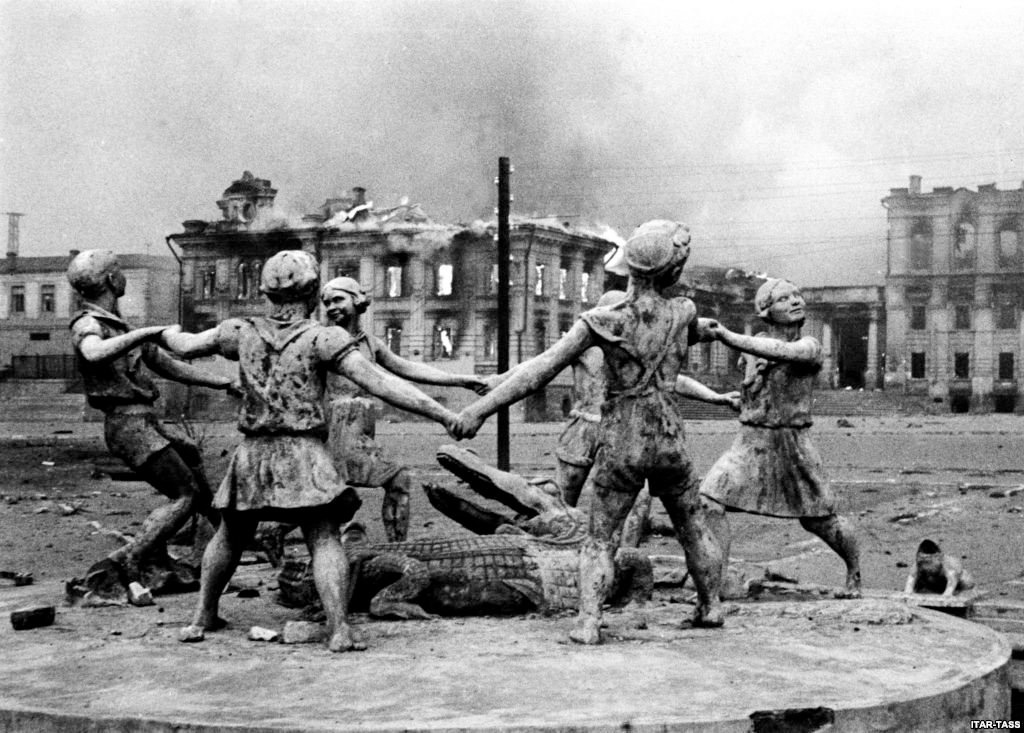
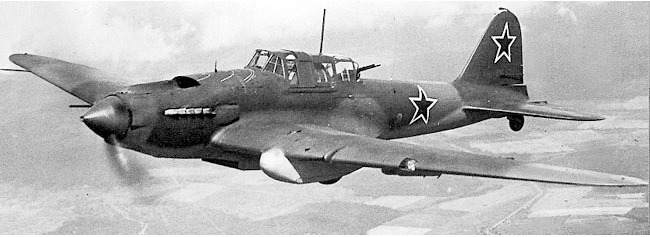
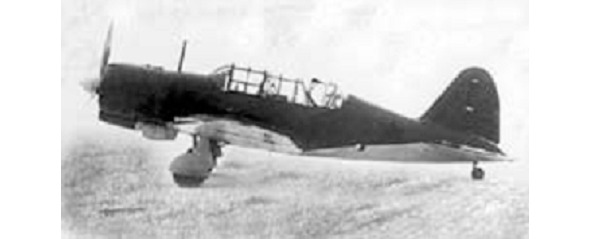
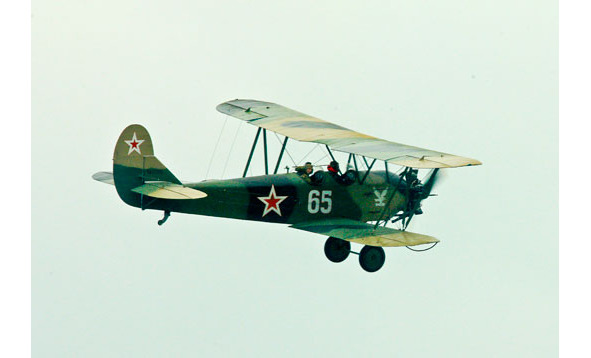
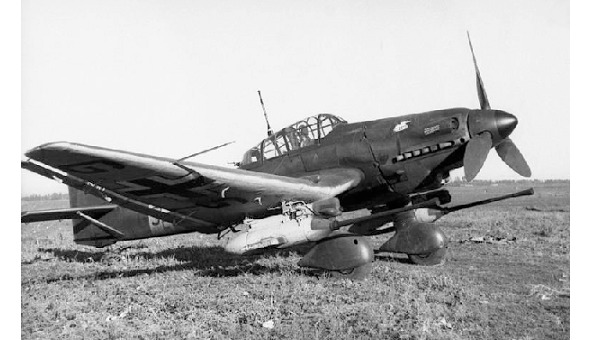
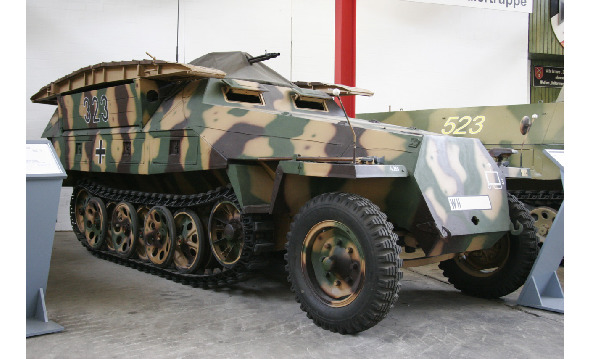
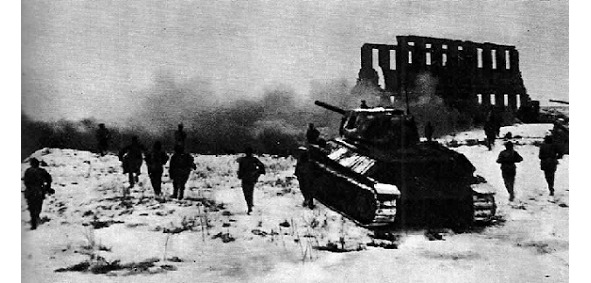
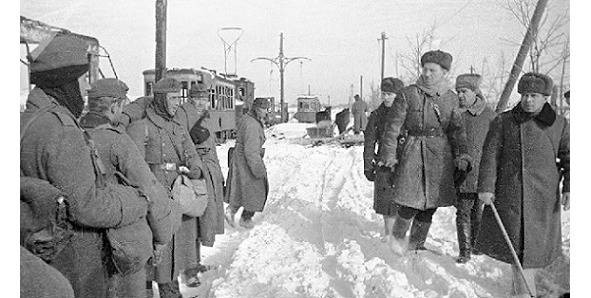
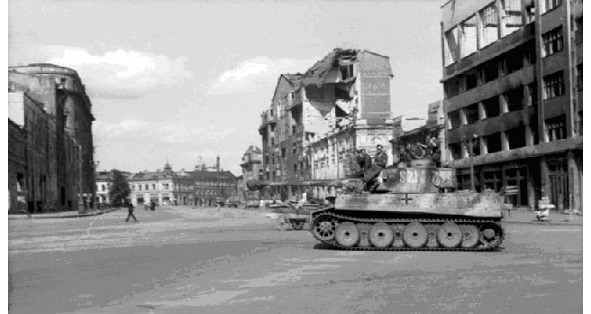
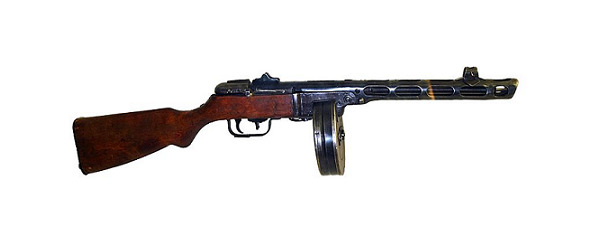

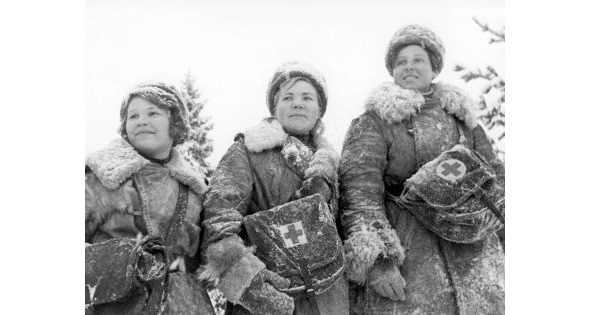
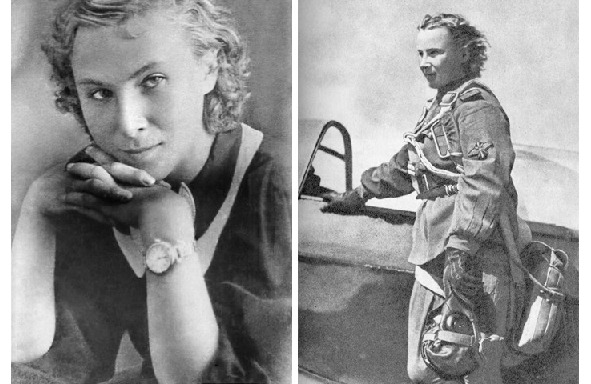
1. IL-2. Crew of 1—2 people. The nickname in the German parts is the quite respectable «Butcher» («Fleischer») or «Black Death» («Schwarztodt»), and also «Cement Bomber». Armament — two 23-mm. guns, 150 rounds per barrel, two 7, 62 mm. machine gun, with 750 rounds, one 12, 7 mm. defensive machine gun in the rear cabin. Armor, covering the pilot (but not the machine gunner) and the main technical nodes — 12 mm. For the indecision of the pilot could be re-qualified as a rifleman. The standard bomb load is 400 kg., four 82 mm. or 132 mm. rockets (the total weight of the RS is about 80 kg). The speed of the land is 386 km. h, at an altitude of 1200 m — 404 km. h. Diving angle — up to 45 degrees. The range of flight is 720 km. The average percentage of losses — 2.8% (but until 1943 for 30 combat sorties the survivor was awarded the title of Hero of the Soviet Union). 36 000 units have been produced. Currently, there is only one rebuilt and flying IL-2 — it is in the US.
2. Su-2. Soviet near bomber aircraft designer Pavel Sukhoi (born in Vitebsk region), the first aircraft of the famous line of Su models, taking part in hostilities. Crew 2 people, speed 470 km. h, range 900 km, small arms 2 SHKAS mobile machine guns (covered with the opening cockpit cover) and 4 fixed, 8 Nursa, bomb load 400 kg. From 1940 to the beginning of 1942, 893 cars are produced, after the evacuation of machine sets is exhausted, production ceases. By the beginning of full-scale military operations, the aircraft (profile, etc.) is classified from its troops, therefore, the Soviet air force is not uncommon in its attack. So, on June 22, the unidentified Su-2 is stymied by the future Soviet ace, Alexander Pokryshkin (the pilot is killed). Since mid-1943, having a cab with a high visibility, the aircraft is usually used as an air raid. So far, little is known about the role of the Su-2 in the Patriotic War. All surviving aircraft are cut to scrap metal, in the Volgograd Museum there is a single full-size copy.
Su-2 shows good results in the bombing of enemy troops, in addition, its losses are relatively low: 1 aircraft for 23 sorties, with an average ratio of losses of other bombers Air Force of the USSR in the first half of the war — 1:14.
3. U-2 (since 1944 — Po-2, named after the designer, Nikolai Polikarpov), according to the NATO codification — Mule — «Mule». The German nickname, because of the characteristic sound of the engine — «Nähmaschine» — «SewingMachine». Soviet multi-purpose biplane. The flying weight of the training airplane is 1012 kg, bomber and ambulance aircraft — 1400 kg. Engine power 125 liters. from. The speed is from 60 to 140 km. h. The main bomb load is 250 kg, and up to 500 kg. In some cases, the aircraft is equipped with 7.62 mm. a machine gun to protect the rear hemisphere. Takeoff and run at takeoff and landing — 100–120 m. Since 1927, 33 000 copies have been produced.
As a light-engine night bomber, the U-2 shows itself with the best of luck. The losses of Po-2 are relatively small, some pilots during the war make about 1000 sorties. The main idea: approach to the target with the engine off, dropping bombs on any light source in the area where the enemy forces are deployed. Overnight one biplane produces up to twelve bombardments.
U-2 is a difficult target for German high-speed aircraft precisely because of its weakness — low speed. So, for example, for «Messershmit-109» the maximum speed of Po-2 corresponds to the minimum speed of «stalling» the fighter.
U-2 can be equipped with additional gondolas under the wings, for the evacuation of 6 wounded. In February 1943, from the Osveya-Polotsk-Sebezh (Belorussia) region, to avoid destruction by Latvian and Ukrainian collaborators, Po-2 takes out several dozen children for the flight.
4. «Stuck», Sturzkampfflugzeug (German — dive bomber), he is also a «Laptevnik» because of non-retractable landing gear, Junkers-87. It has a window in the floor of the cabin, an air brake, a siren, for psychological impact, as well as determining by ear the speed of the aircraft when diving. At the moment of reset, the bombs are pushed out by the screw with a special mechanism, after which the aircraft is withdrawn from the peak. Crew of one or two people. Armament — in the anti-tank version two 37-mm. guns with shops for 6 shells of tungsten carbide, two 7, 92 mm. machine gun, the standard bomb load from 250 to 700 kg (depending on the modifications). The diving angle is up to 90 degrees. The maximum speed is 310 — 408 km. h, the flight range of 800 — 1165 km. 6500 units are produced.
There is an opinion that «Junkers-87» with 37-mm. the gun proved to be unusually effective against tanks. An example is the effectiveness of Hans Rudel, who, according to him, destroyed 519 Soviet armored cars, 800 trucks, 60 barges, etc. At the same time, he himself (who seems to have a considerable stock of lives) was shot down 32 times, completely disabling the aircraft. So, with the ratio of losses: one stormtrooper — 16 tanks, the pilot is awarded admission from Hitler and the Knight’s Cross with Diamonds. If we divide the victories declared by the Germans, at the suggestion of the British historians by three, one Junkers for 5 armored vehicles.
According to other sources, there are so many shelled-scratched Soviet armored vehicles in the entire 4th group of Hans Rudel, in 16—18 cars; according to the German tradition, they were all recorded on the account of the commander.
5. German semi-track armored personnel carrier Sd. Kfz. 251 Sonderkraftfahrzeug. Weight 9 tons, the crew of 2 people, as well as 10 paratroopers. Staffing: 1—2 MG-42 machine guns, and also, with minimal changes in design — mortars, guns (of various types, including captured ones), large-caliber anti-aircraft machine guns, flamethrowers, rocket launchers. Reservation — the forehead of the body is 10—15 mm., The board is 8—14 mm., The roof (partial protection) and the bottom — 6—8 mm. The speed along the highway is 53 km. h, power reserve 300 km., specific power 10.3 hp. From 1939 to March 1945, 15252 units were produced. Together with Sonderkraftfahrzeug 250, similar in characteristics to the German armored personnel carrier, released in the number of 7326 copies, Sd. Kfz. 251 was the basis of a large family of machines for various purposes. The index «251» shows how many total there are series of half-tracked conveyors, by the sum of combat qualities, among other things, approaching the T-3 tanks (an approximate analogue of the Soviet T-26), or even T-4 first issues. The total number of such machines is difficult to calculate, in the first approximation one can safely voice the number «30 000».
In the Red Army (the Soviet Army) and, by and large, in the Allied forces, armored personnel carriers of mass distribution do not receive.
Sanitary version of the German (here, probably — trophy) armored personnel carrier. Quite high profile, convenient rear hatch, partially open roof contribute to the high habitation of the machine, and therefore, the preservation of the combat potential of soldiers.
6. … The battle on the outskirts of the city of Kalach-na-Donu. Here, on November 23, 1942, the ring around the group of German fascist troops closed.
7. ....Captured German soldiers in Stalingrad
8. «Tiger» in Kharkov Street — the last successful large-scale counterattack of the German army.
9. Soviet submachine gun PPSh. Designed in 1940 by designer GM Shpagin, at the end of the same year it was adopted. The cartridge is 7.62 × 25 mm., The initial speed of the bullet is 500 ms. (almost twice as high as that of the distant analogue, the «gangster» Thompson), the rate of fire of 1000 rounds per minute. The aiming range is 200—300 m. The weight of the loaded 5.2 kg. Capacity of the drum shop is 71 cartridges, sector (carob, accepted in 1943) 35 cartridges. Possibility of conducting single shots. In 1942, tested, very similar to the Kalashnikov assault rifle, PPSh-2, but, he concedes (above all, over excessive weight) the PPS A. Sudaev. Until the end of 1941, 0.9 million units were produced, total, from 1941 to 1947 — 6 million. The Soviet military noted a slightly lower reliability of the PPS, in comparison with the German so-called. «Schmeisser», however, it’s just such a psychological moment. Alien, as a rule, always seems the best. German soldiers and officers on the contrary, believe the PPSh to be more accurate than the MR-40, the SS seek to equip their advanced elite units with captured Soviet automatic weapons. In addition to the PPSh, Mosin’s rifles and self-loading SVTs «work» on the front. «Self-charging» Tokarev — a good weapon, however, it requires a special relationship. To fully assess its potential only able to have passed into the infantry, accustomed to handling complex technology seamen.
10. German submachine gun MР-40 («Maschinenpistole» or, traditionally, «Schmeisser»). Designed by Heinrich Vollmer on the basis of MR-36 (with a wooden butt). Hugo Schmeisser has a patent for the store to the machine, which is evidenced by the corresponding inscription on the horn; and therefore the MR-40 acquires such a second name. The cartridge is 9 × 19 mm, the initial velocity of the bullet, depending on its purpose is 320—400 ms, the rate of fire is 540—600 rounds per minute. The curb weight is 4.8 kg. The magazine capacity is 20, 25, 32 (as a rule), 40, 50 rounds. The ability to fire single shots — by quickly pressing the trigger. From 1938 to 1945, 1.1 million units were manufactured.
The main weapon of the Wehrmacht infantry is the Mauser 98k rifle. Weight 4 kg, cartridge 7.92 × 57 mm., The initial speed of the bullet is 760 m.s, aiming range is 1500 m. The store contains 5 cartridges. The firing rate of 15 rounds per minute exceeds the similar characteristics of the Mosin rifle due to the bent trigger, allowing to shoot, without reducing the barrel from the line of sight. At the same time, the aiming range of the last shot, due to the higher velocity of the bullet (870 ms), is two kilometers above.
From 1935 to 1945, 14 million copies were produced. Some rifles are still in use, like hunting rifled weapons.
11. …Employees of the RKKA health battalion. Almost all military doctors, who had the right to do so, changed their profession after the war.
9. Lydia Vladimirovna Litvyak, fighter pilot, Hero of the Soviet Union. Birth — August 18 (Aviation Day), 1921, Moscow. From the age of 14 — classes in the flying club, getting a trip to one of the few aviation schools, taking girls — Kherson, returning to the capital, work at the Kalinin aeroclub (in place of the current microdistrict «Yuzhny»), training 45 pilots. Lydia’s father, a railroad worker, V. Litvyak, was shot in 1937 (when his daughter commits the first independent flight). This can be hidden for the time being. In 1942, the girl sought enrollment in 586 «female», created on the initiative, already very famous Marina Raskova fighter regiment. First, it is remembered by a fashionista who changes fur from the umb to the collar (and is serving for that day’s arrest), a lover of long scarves made of parachute silk, but since August 1942 — a very effective fighter pilot. In the sky of Stalingrad, Lydia shoots down two Yu-88s, two Me-109s and one D0—217, becoming the world’s first female pilot to personally shoot down the enemy’s plane. The nickname or, originally, the self-name of Lydia, who probably does not like the somewhat firm «D» in her name — «Lily». The image of the flower appears on the fuselage Yak-1. Sometimes a lily painted by a regimental artist is considered a rose, because the flying girl is alternately called the «White Rose (and, or Lily) of Stalingrad.»
After a while, the female fighter regiment is disbanded, and the pilots are assigned to the «regular» air regiments.
There will be an acquaintance, a wedding with Alexei Salomatin, by that time already a Hero of the Soviet Union, who has on his account 18 planes destroyed. His «Yak» comes back from the battle riddled, and, already at the airport (in front of Lydia) explodes.
Liliya shoots down 12 planes personally, 4 in group, becoming the most productive pilot-ace in history. August 1, 1943 at the turn of the river Miuss (Donbass), when returning from a combat mission, its «Yak-1» is pummeled by a German fighter emerging from the cloud.
There are rumors that Lydia was taken prisoner, she was seen in a car with German officers, and so forth, because the appropriation of the title of Hero of the Soviet Union is postponed indefinitely. The remains of Lydia were identified only in 1969. Unfortunately, the «Yak» found in the beam is cut into scrap metal a few days before the arrival of the search group.
This photo (5) is not in the search base as having a «license for use and modification», if you have a complaint, please contact the author.
In total, the USSR Air Force has three women’s aviation regiments (on the average, the air regiment is 36 cars, 3 squadrons): 586th fighter, Yak-1, 587th bomber, with Pe-2 dives, and, most notoriously, until the end of the war female, 588th light-bomber, on Po-2 planes («night witches»).
It is appropriate to give a list of the most effective aces of World War II:
Ivan Kozhedub — personally, La-5 and La-7 — 64 aircraft, plus two unreported American «Mustang», for unknown reasons attacked him in the zone of operation of Soviet aviation. There is information about the shooting down of several American planes on MiG-15, during the Korean War.
Alexander Pokryshkin (on the MiG-3 and Aerocobre) — 59 in person, 6 in the group. Another (first) aircraft, alas, a Soviet light-engine bomber, shot down by mistake. Soviet pilots have a custom to stimulate the slaves (covering the attack), giving them their victories. So does A. Pokryshkin, whose personal account is, obviously, 90 aircraft Luftwaffe.
Pokryshkin’s special merit consists in bringing to the superior command the advantages of German tactics of conducting air combat in pairs, not in troikas, in the so-called «free hunting» — «he saw from a height, attacked, disappeared». Such behavior is worth a lot of nerves to the pilot, temporary removal from office during the trial of the case in the tribunal, expulsion from the party…
Grigory Rechkalov («I-153», «Yak») — at least 56 (according to the specified data 61) personally, 6 in the group.
Thomas Pettl (born in South Africa, the British Air Force) — on the Gladiator, Hurricane, from 1940 to 1941, before his death in battle — 51 personally (primarily Italian aircraft), 6 in the group («separated»).
Richard Ira Bong (USA) — 40 shot down on the «Lightning» Japanese fighters «Zero» definitely, seven — probably.
Klosterman Pierre (France). On Spitfire and Hawker, during the service in the French and British Air Force — 19 independent, 14 divided victories.
Erich Harmann (Germany) — 352 wins, with the loss of 14 of his Messershmitt-109, as a result of fuel shortages, damage to debris from downed planes, and possibly from enemy fighter aircraft (which was concealed in order not to spoil the reputation). August 43 — getting into Russian captivity, imitating wound and incontinence, in order to cause pity for the soldiers, also to prevent a search, escape, return to service. At some point, the extraordinary effectiveness of Hartmann raises doubts even in the Supreme Staff of the Luftwaffe, accustomed to stamp heroes for the Reich, however, rewarding Oak Leaves and Swords to the Knight’s Cross at Hitler’s rate frees the pilot from unnecessary suspicion. So, fighting already on the Western Front, he declares the shooting down of 11 American Mustangs in just one day, on August 24, 1944.
In 1945, the Americans hand over the accused in war crimes, who surrendered to Hartmann (as he had fought before against the USSR), to the Soviet troops. In the camps, he rebels against coercing German officers into hard physical labor (which is a violation of the International Law on prisoners of war), requires special treatment, is generally sought, released under an amnesty in 1955. Hartmann then enters the Air Force Germany, commander of the squadron «Richthofen», repeatedly visits the United States, retired as a flight instructor, and leaves this world in 1993.
Hirooshi Nisizawa, Japan. On the Zero fighter, 87, or perhaps 147 downed American aircraft. From a certain point in the Japanese aviation they simply stop to conduct individual statistics. During the flight for new fighters, in October 1944 Nisidzawa died as a passenger of the transport «Makadzhima.»
Eino Juutilainen. Finland. During the Winter War, the Fokker FR-106 — I-16 and DB-3. Further, at Messerschmid-109, 92 Soviet aircraft were part of the forces of the Axis countries.
Occupation of Vichy France
According to Reich’s agreements with the collaborative (from French «cooperation») government of Henri Petain, part of France south of the established borders, about half of all territories, is managed quite autonomously. The capital of this part of Gaul is the city of Vichy (hence the name of the regime). The main reason — it is difficult for Germans to manage the vast colonies of France in Africa, Indochina… even in far-away Latin America, etc., local administrations, all ties are tied to the French. Parity is respected: we allow keeping the colonies to ourselves, leaving part of the country to the French, in return you keep subordinate state entities from actively assisting the Anglo-American allies.
Be that as it may, on November 8, 1942, the British and Americans quite successfully landed in Morocco and Algeria. The Nazi command now believes that with the game in «Free France» it is definitely time to finish. And, on November 11 (that is, a week before the start of the series of actions on the encirclement of the group of troops of the Axis countries near Stalingrad) an operation is being conducted under the code name «Anton». Parts of the two German and Italian armies, without special problems, occupy the French Riviera, as well as Corsica. Almost the only one of the French generals, Latr de Tassigny, who gave the order for armed resistance, is immediately arrested by his own officers.
So, the 50,000th land grouping of French troops surrenders to the mercy of the victors. There is still a demobilized fleet in Toulon, about 90 pennants, including ships that survived the Anglo-Saxons’ devastating bombing raids near the town of Mers-el-Kebir (colonial Algeria).
At least just one percent, the Vichy government is still patriotic. From the capital to Toulon there are orders for the flooding of the fleet. German counterespionage is trying to break the communication lines, or disavow messages. Sometimes commanders of ships require a strictly written instruction. German soldiers are already rising on some of the disarmed or defunct ships.
Nevertheless, the French sailors show courage, or at least discipline, and, on November 27, they blow up pre-mined vessels. To the bottom are 77 pennants, first-class warships. Germany gets 4 submarines and 3 destroyers. Three submarines and a ship of pilots leave for Algeria.
The second Rzhev-Sychyov operation
…The second Rzhev-Sychevsky operation for the liberation of Rzhev lasts from November 25 to December 20; Soviet troops lose about 90,000 killed and 1,400 tanks, with German irretrievable losses of 40,000 people, 400 tanks and self-propelled guns. The city has been liberated, but it is, rather, the result of a successfully and skillfully conducted Battle of Stalingrad.
On February 2, Soviet troops launch a new offensive in the Kharkov direction, on February 15 they storm Kharkiv, they succeed, but the SS 2nd Panzer Corps uniting the elite divisions «The Dead Head», «Reich» and «Adolf Hitler» leaves the city with the intention to return soon. This is what happens: parts of the Red Army scatter forces in different directions, go forward while there are fuel in the tanks, then they are isolated and destroyed in parts. On March 14, the Wehrmacht forces surround Kharkov and the Soviet tank army, which, however, as a whole successfully, manage to get out of the cauldron. There comes a spring’s mudslides, and both sides take a break until summer. Losses of the parties: the Red Army 50—55 thousand killed, 1130 tanks, the Wehrmacht 15 thousand irreversible losses, 250 tanks.
What else is happening during this time?
In 1942, the German administration began to evict from the Polish-Ukrainian border of the Poles, and instill in them a place loyal to the new regime, who do not have the experience of their own statehood of the Ukrainians. The Polish partisan army Craiova (AK, the Patriotic Army, the total number of about 300 000 people) is responsible for the destruction of several hundred representatives of the Ukrainian rural elite. In any case, initially a strong peace between ethnically and religiously mixed villages, alas, no. The Ukrainian Insurgent Army (UPA, about 20,000 people, as well as the villagers who joined it) kills at least 120,000 peaceful Poles (the so-called «Volyn Massacre»), most of them with cold steel. The Germans patronize the UPA. AK also destroyed the Ukrainian population, in the same area, according to various estimates, 20—24 000 people, and also, on occasion, escaped from German concentration camps of Soviet prisoners of war; if they were few, they did not have weapons, or they agreed to disarm.
A film that explains the subtleties of what is happening, weighted and recommended by the author of the book — Volyn, 2016.
On April 29, the ROA, the «Russian Liberation Army» under the command of General Andrei Vlasov, was created. Among its leaders are representatives of the White Movement, as well as of the Kuban Cossacks. The recruitment of volunteers is conducted in German camps, among the surviving prisoners of war. The formed units are sent, mainly, to Yugoslavia, to fight the partisans of Tito, or, subsequently, to France and Italy, against the Anglo-American landing. According to some reports, the commander of his units Vlasov could take part in the conspiracy of German generals against Hitler, in 1944. The largest number of ROA — 120 000 people. Some of the soldiers and officers managed to hide in the West, the rest were given to Stalin and, in the majority, they were shot.
In the Crimea, the German administration creates at least 10 volunteer battalions «Waffen SS» from the Crimean Tatars. The core of the national formations is the Tatar Mountain Chasseur SS Regiment. The collaborators in the partisan detachments desert, give out to the Germans or seize themselves, all the large food «tabs», actively cooperate with the new government. Many become guards in the death camps and are extremely proud of the German form. The mullahs pray for Hitler’s health.
The population of Crimean cities is subjected to severe repressions. The ethnic Russians, Jews, etc., who are fleeing from the Nazis, are trying to find shelter in nationally isolated villages — but «locals» issue them to the occupants, or deal with them themselves. Repression reaches such proportions that the Russian-speaking inhabitants of the Crimea sometimes turn to the German authorities for protection.
In all, there are 20,000 Crimean Tatars in the national formations (which, by the way, have a significant mental difference from Kazan), that is, every second adult man; they enjoy full support among their 200,000 people. About 65,000 Russians, Jews, etc. become victims of them; so the inhabitants who consider themselves «local» from the time of Batu liberated «living space» for themselves.
The modern Mejlis (2013) declares that it is not going to dissociate itself from the collaborative «National Committee», and does not consider its predecessors who collaborated with the Hitlerites to be traitors.
Strictly speaking, many Greeks, Armenians and Bulgarians are traitors too, almost everyone whom the Germans temporarily define as an accessory to the «man of the highest race». The temptation to appear elected, to create everything on his whim, to command — for the average person is too great…
In 1944, the Crimean Turks, along with 70,000 ethnic Germans living here since the time of Catherine II, migrate to the regions of Uzbekistan and Kazakhstan (similar in climate to the Crimea); During this operation, about 200 people die from diseases, heart attacks, etc.
…On the territories seized by the Reich, the occupying Reichsmarks are still in progress, in order to avoid inflation in Germany itself, and also to save money on printing money, Soviet rubles. Their rate is set by the administration arbitrarily, on average, 10 rubles for such a mark. It turns out, for the 20 marks listed here, you could buy a loaf of bread (in the period of the highest successes of the Wehrmacht in 1942).
…By the beginning of 1943, Soviet troops practically stopped using the «weapons of desperation» — the so-called «anti-tank dogs».
In view of the extreme shortage of artillery and ammunition, 80% of which were lost in the first months of the war, the «friends of a man» who have passed a special training course become effective enough against enemy tanks. On the back of the «self-guided torpedo» is strengthened the charge of TNT, weighing 4.5 kg, and equipped with a 20-centimeter pin fuse. The dog is accustomed to the fact that the food it can find under the bottom (even of a moving and shooting) tank. In combat conditions, with the fuse removed, this means a powerful explosion, incorrigible damage to the tank, and, of course, the death of the animal itself. In total, 300 units were destroyed by «anti-tank dogs». armored vehicles — about one-twelve of the original number of Wehrmacht tanks on the Eastern Front.
The German answer is the creation of remote controlled miniature Golyaf tankers. Weight — 370 kg., With a combat charge weight of 65 kg., Armor 10 mm., Gasoline engine 12 hp, speed 10 km.ch. Since the summer of 1943, 7564 copies have been produced. The effectiveness of trying on tanks and infantry accumulations of this very expensive weapon is near-zero.
It can be said that, detached from the realities, wishing to create something exceptional, German engineering, military thought ceases to give anything really useful in the war. The only effective anti-tank weapon that arrived in the army by August 1943 — Faustpatrone — was copied from the American M-1 bazooka seized in Libya. In total, Fausts produced 8.2 million pieces, with low weight (3 kg), relative compactness (985 mm in length), armor penetration of 140 mm. they played a significant role in slowing the progress of the Soviet tank armies.

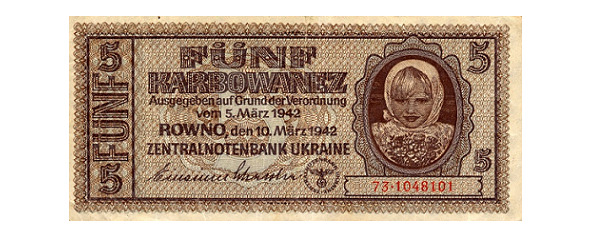
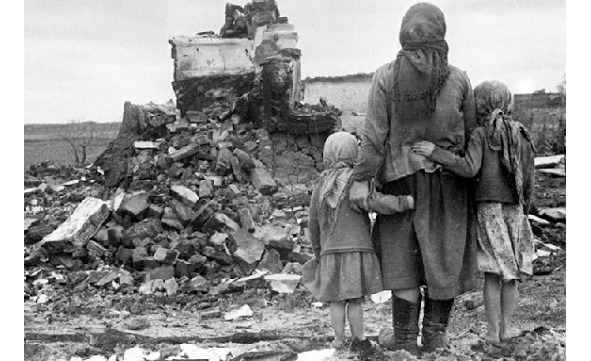
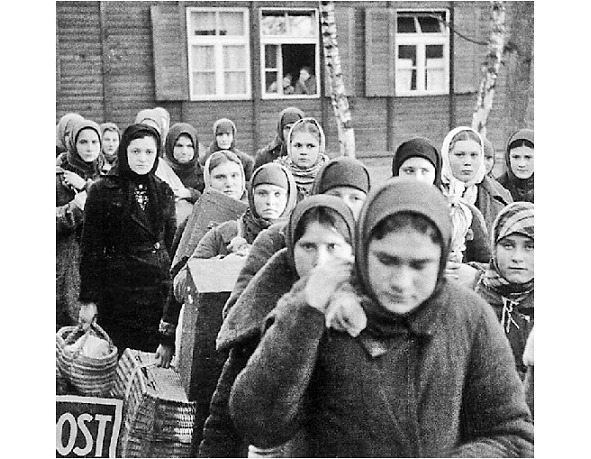
1. General for all occupied territories occupying 20 marks.
2. Money for the «Reichskommissariat» Ukraine. It was allowed to use also small Soviet bills (even with the image of the Red Army man).
3. In the occupation of settlements in Russia, Germans and their allies (except, sometimes, Italians), as a rule, expel local residents from homes. Leaving the occupied territories, Wehrmacht soldiers blow up or burn residential buildings, and other valuable buildings.
4. Since the beginning of 1942 (the «blitzkrieg» failure), 5 million people have been hijacked for forced labor in Germany. Of them 2, 4 million from Ukraine, 0, 4 million — Byelorussia, 2, 2 million — Central Russia. 2, 2 million died in captivity. 0.4 million, fearing reprisals, prefer to stay in the West. Remaining by order of Stalin are struck in the rights (inability to admit to higher educational institutions, to leadership positions, decent work, etc.). Also, the Stalinist Soviet Union renounces any reparations in favor of the repatriates (unlike the Jews of the Western countries, who quite easily received from Germany 108 billion full-weight dojchmarok).
On the ground, German troops practice, first of all, physical extermination of draft and pre-conscription youth from 14 years of age.
The Battle of Dieppe
Anglo-American allies are trained to conduct real hostilities on land. August 19, 1942, at 5 o’clock in the morning there will be a sea landing in the occupied French port. The general meaning of the operation is rather vague; the destruction of coastal fortifications, the capture of prisoners, the collection of information and «evaluation of the reaction» of the enemy. A small fleet encounters an enemy convoy. The battle begins. The element of surprise is gone. About 6,800 marines, mostly Canadians, are attacked by already well-trained 1,500 Germans, bogged down in city battles, and lose their offensive impulse. In just 4 hours, under the strongest fire of the enemy begins disorderly evacuation. Result: 3,600 paratroopers are killed or taken prisoner. Allies lose 108 aircraft, 50 tanks «Churchill», mostly on the coastal strip, 33 barges and destroyer. Wehrmacht losses on land — 311 people (according to other sources — 4), 48 aircraft.
According to some reports, the disruption of the operation is also due to the inconsistency of the actions of the secret services of Great Britain. One of the parties in MI6, and the government itself, could directly oppose the too early, from its point of view, the opening of the Second Front (before the exhaustion of the USSR).
The battle for al-Alamein. The beginning of carpet bombing in Germany
The African corps of General Rommel, deprived of any steady supply of reinforcements, with the fourfold superiority of the English (commander B. Montgomery) in manpower and technology, who have no problems in supply, after some of his initial successes, is pushed back to Tunisia. There, on May 12, 1943, a grouping of German-Italian troops, numbering 250,000 people, is forced to capitulate. North Africa becomes a springboard for an invasion of Europe. Irreversible losses: Wehrmacht — 12,000 people (Italians and Germans), 232 tanks, 84 aircraft, Great Britain 8,000 people, 332 tanks, 97 aircraft.
In May 1943, the British Air Force was attacking the Ruhr dams using «jumping bombs.» This is about the survival of the UK itself, so the target is selected by the large military factories in Essen and Ruhr, still being «private property» of American and British corporations. After the war, the governments of these countries will pay off with the owners of the companies for the damage caused to their enterprises. Despite the relative success of individual point strikes, the idea of carpet bombing of large German cities ripens, for a plus or minus seven and a half kilometers of deflection of aerial bombs is already considered an accurate hit on the target. A decision is made on the strategic bombing of Germany, which will be fully deployed in July. Since 1940, luck is considered, if one of ten aircraft just reaches the target; In the future, thanks to an increase in bombing altitude and improved navigation instruments, the situation is straightened out. The basis of the Anglo-American air forces is the «Flying Fortress» B-17, the weight of the equipped bomber 24 tons, the crew of 10 people, 9—12 machine guns caliber of 12, 7 mm., The combat radius is 3,200 km., With a bomb load of 2.5 tons. Loss of 25% in unsuccessful «trial» flights, 3% according to statistics at the end of the war. Contribution to the destruction of German cities also makes the British high-rise «Mosquito», which has a fighter speed (and even higher) — 668 km. h, thanks to the extensive use of plywood in the design — little noticeable for radar, used generally without any small arms. Two person crew, 900 kg. bombs, 2,500 km. the combat radius of flight, 1.6% of the average statistical losses. During the years of the war, 2,7 million tons of bombs were dropped into Europe under the Axis powers, approximately 50 times more than Germany «delivered» to the UK.
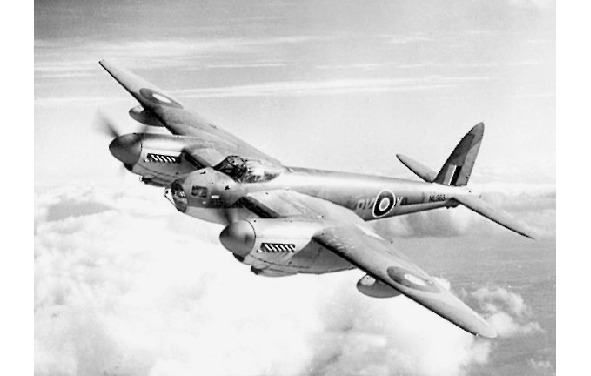
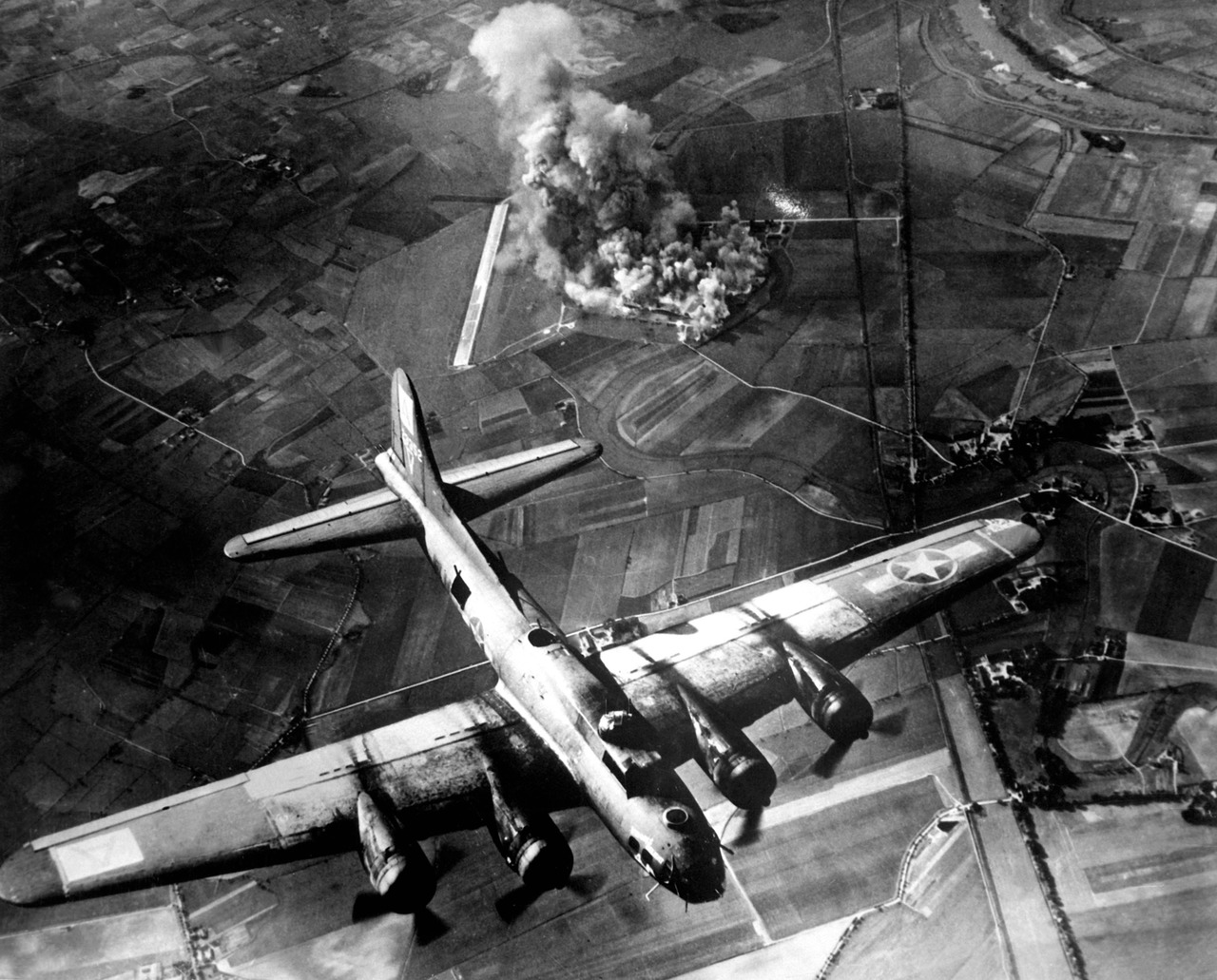
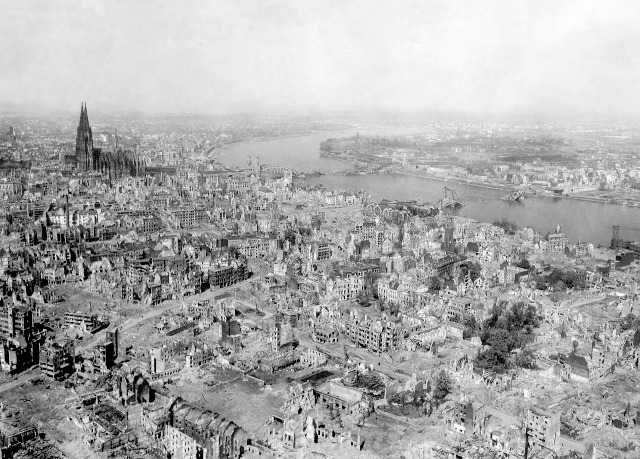
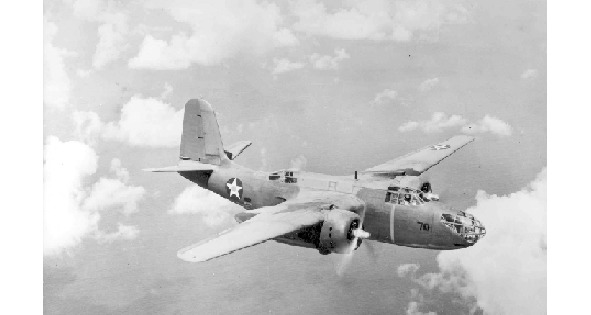
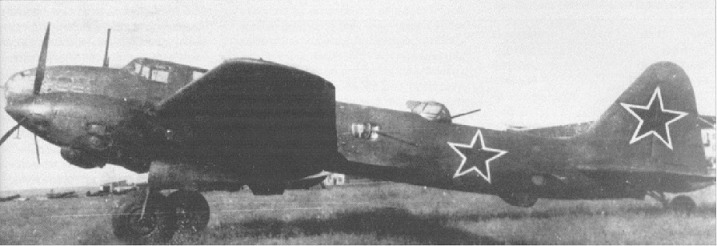

1. Speed unarmed Mosquito.
2. B-17 (Boeing B-17 Flying Fortress), «Flying Fortress», American four-engine bomber. Total production of 12 726 units, in battle lost a third, while a rather high performance is shown. The maximum speed is 516 km. h., the ceiling is 10 km., the combat radius (round-trip) is 3200 km., the practical bomb load is 2500 kg. In the photo, the bomber returns after a raid on the Focke-Wulf plant.
3. Destroyed by the Anglo-American aircraft Cologne.
4. Lend-Liz bomber «Boston» (Douglas A-20 Havoc / DB-7 Boston). A total of 3,066 units were supplied to the USSR. Own armament — 6 12, 7 mm. machine guns (part — controlled by servos), bomb load 1100 kg. In general, it corresponds to the Soviet Il-4, but has the highest level of comfort for the crew (airtight cabin, heating, a bathroom under the seat of one of the pilots), a reliable radio station and a set of navigational instruments. The plane won the trust and respect of Soviet pilots.
5. Il-4, the Soviet long-range bomber, the speed of 430 km. h., a range of 3800 km., a crew of 4 people, a mass of 12 tons, a combat load of 1500 kg. Capricious takeoff, comparatively high non-combat casualties.
6. Pe-8 (TB-7), a Soviet heavy (strategic) bomber. Crew of 10 people. Takeoff weight up to 35000 kg. The bomb load is 2000 kg. (maximum 4000 kg., or 50 people) range of flight from 3600 km. up to 5800 km., depending on the type of engines, the maximum speed is 440 km. h. Defensive weapons — two 20 mm. guns SHVAK, two 12.7 and two 7.62 mm. machine gun.
Till now disputes are going on — whether there were raids of the Soviet bombers of long-range aviation to Helsinki in February, 1944 unsuccessful, or preventive, as they were called by Finns, «bombing for the sake of the world». A total of 2600 tons of bombs were spent on the capital of Finland, port facilities, ships, in three raids. In the center of the city were 5—7% of their number. In general, the Soviet Air Force, in order to avoid casualties among civilians, did not aspire to full-scale carpet bombing, limiting itself to the direct support of ground forces.
April 19 begins an uprising in the Warsaw ghetto — fenced three-meter wall area of the city. Living here people learn that under the guise of «deportation to the east» they are taken to the death camps (Treblinka) for destruction. The weapons can be purchased either on the «black market» or at the Army Krajowa — however, in this case the account goes to units of revolvers, machine guns and dozens of hand grenades. In the course are also improvised explosive devices and Molotov cocktails.
On the night of May 13—14, Soviet aircraft dropped about 100 tons of bombs on the SS barracks in the city, causing enthusiasm among the insurgents. There are victims among the Jews, but some of them, during the raid, manage to escape. The whole uprising was suppressed on May 16, this area of Warsaw was leveled literally. 7000 defenders were killed, 6000 were burnt as a result of arson of buildings by German soldiers, 15 thousand of the remaining inhabitants were sent to Treblinka. In total, from 1940 out of 450,000 inhabitants of the Warsaw ghetto, about 37,000 remained alive. According to the report of the German officers, SS losses were 18 «Schutze», according to the Polish underground press, 400 and even 1,000.
In 1940, the Jews, who were in the power of the Hitlerite leadership, were not yet accepted by the free European countries, including the USSR, and also were not resettled to Madagascar, the colony of France. During the war, they were destroyed by special Einsatzgruppen recruited in the SS troops, the Wehrmacht, or by the local population, such as Croatia 20,000, Lithuania 140,000, Latvia — 70,000, and Western Ukraine 130,000 (at some point the Germans even made protection of the Jewish population) and Crimea (Crimean Tatars) — 22 000. In total during the Great War, more than 6 million Jews were killed.
The Battle of Kursk Dug
The battle on the Kursk Bulge begins on July 5, 1943. In this direction, the Wehrmacht received 150 Tigers (T-6) and 200 Panthers (T-5), its T-4 workhorses covered themselves with screens against the cumulative shells and acquired a long barrel 76 mm. gun and broadened tracks, almost equaling in combat worth with the T-34. Participated in the battles also «Ferdinand», weighing 65 tons, and 380 units of all «trivia»; T-3 and even T-2.
In total, the Wehrmacht concentrated on the Kursk Bulge 850,000 people, 2,700 tanks and 2,000 aircraft.
There were light tanks and in the Soviet forces — 300 T-70 with 45-millimeter gun and 35-mm. armor. About 150 tanks were «imported», delivered in lend-lease, in particular, well-armored, but slow-moving «Matilda Mk. II», quite good though archaic in form» Churchill III» with a 57-mm gun and M3» Li», with a» Valentine’s». The basis was, of course, T-34-76, already with an improved transmission, «breaking», not aligned with the guns sighting sights, commander’s turrets and tuned radio stations. An additional advantage was given by the fantastic maintainability of the tank even in the field; interchangeability of parts with other types of combat vehicles, easily detachable units and assemblies, hardening of armor, in which, after hitting shells, cracks did not appear.
In all, the Red Army has 1.3 million combatants on this theater, 3,400 tanks of various types, mostly T-34-76 and KV, and, in addition to the armada of guns and brave combat calculations, 2,200 aircraft.
For the second time after Stalingrad, an inexplicable force fetters the consciousness of the German commanders, forcing them to attack the defenses prepared on a narrow eight kilometer section, without completing the previous extensive roundabout maneuvers. Tanks are bogged down in the minefields, they put the sides of the artillery batteries, they break without hope of being evacuated to the repair site. So, in the north of Dougie, German divisions, from July 5th to 11th, attacked the fortified point near the settlement of Ponyri, losing more than 200 tanks, 22 000 servicemen, against 33 000 Soviet soldiers and not a certain number of guns.
Traditionally, it is commonly believed that on July 12, 800 Soviet and 550—600 German tanks, including 43 Tigers, met on the field near Prokhorovka (on the southern facet of the Kursk Bulge) in a head-on battle. Such figures are used by British historians (including the consultants of the ВВС, Discovery), and they can not be considered, on the one hand, supporters of the Soviet government, on the other — great amateurs of Hitler Germany. The German chroniclers, if only because of their belonging to the people, who never realized the gravity of their crimes in the USSR, write about four or even three «their own» irretrievably lost tanks under Prokhorovka. For them, the war is something like a sporting contest in which the leader is the one who has the higher score of the destroyed human and material units of the enemy, with less of his own losses. And, if you manage to challenge the numbers of the lost match, the war can still be won. They are echoed also by some of their Russian accomplices, «khivi», whose purpose is already to create an information occasion and a desire to show off before television cameras.
…Perhaps the columns are already ready to enter the operational space of the 2nd Panzer Corps SS (three tank divisions — «Dead Head», «Adolf Hitler», «Great Reich») could become an excellent target for the IL-2, very effective 2.5 kilogram cumulative bombs, as it was at the beginning of the battle, we do not recognize this.
Бесплатный фрагмент закончился.
Купите книгу, чтобы продолжить чтение.
